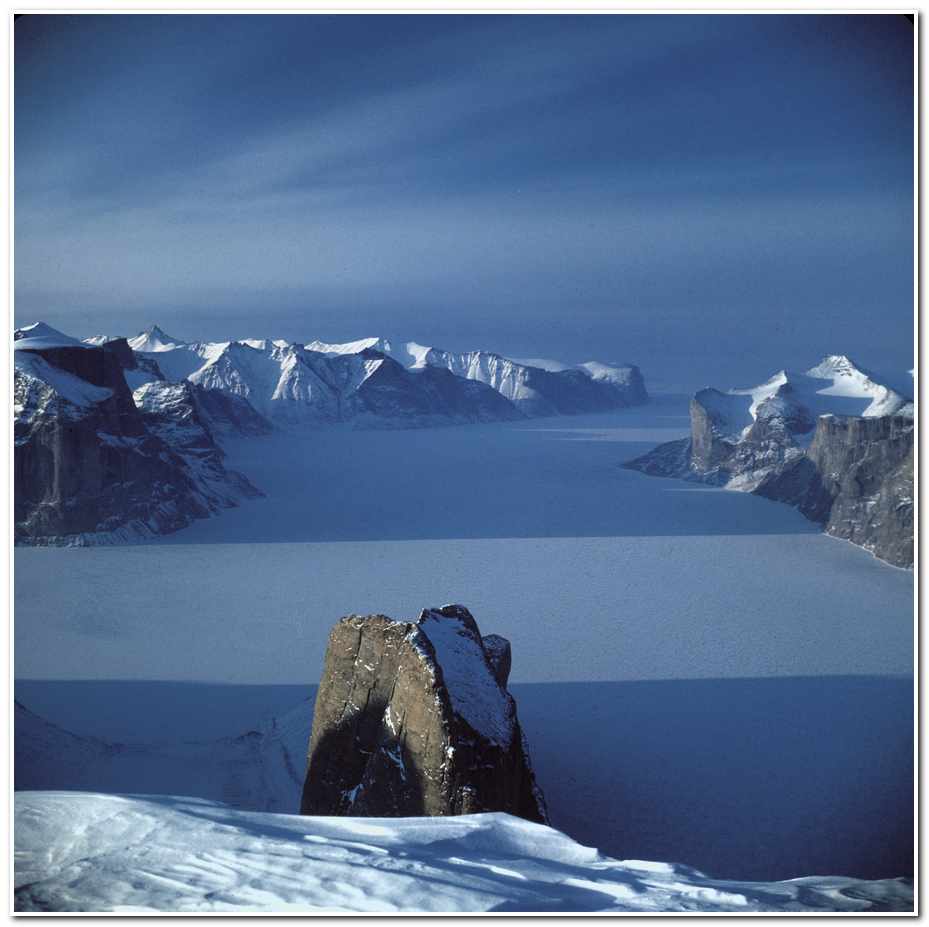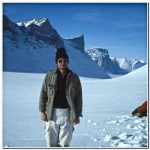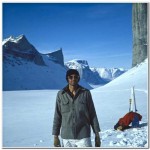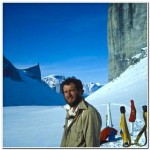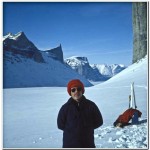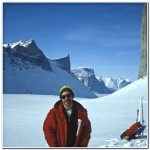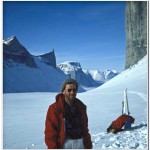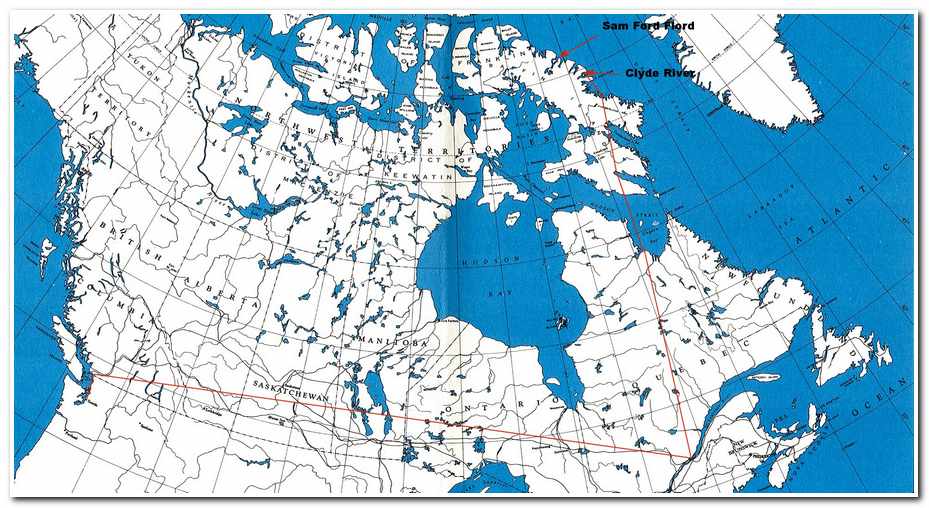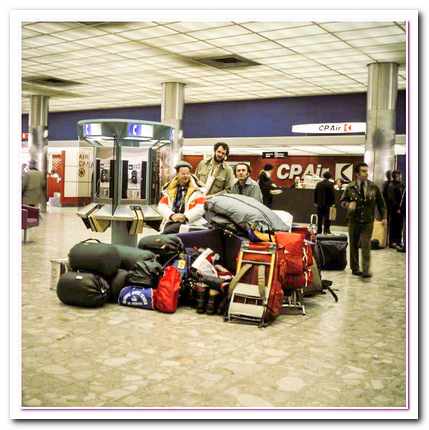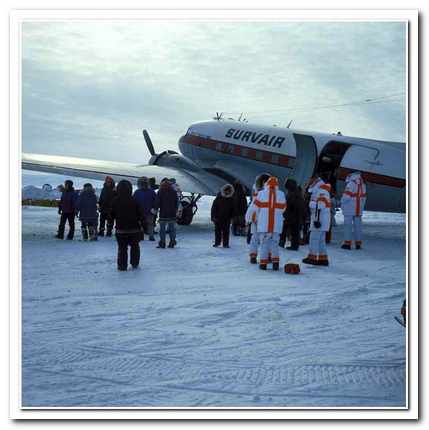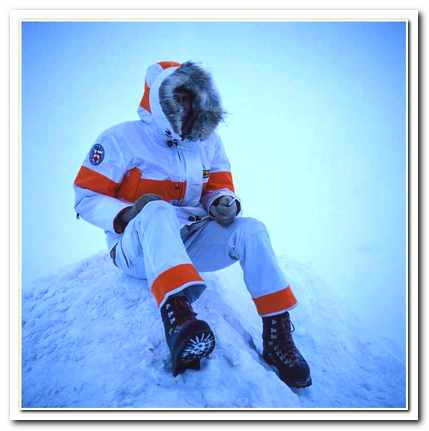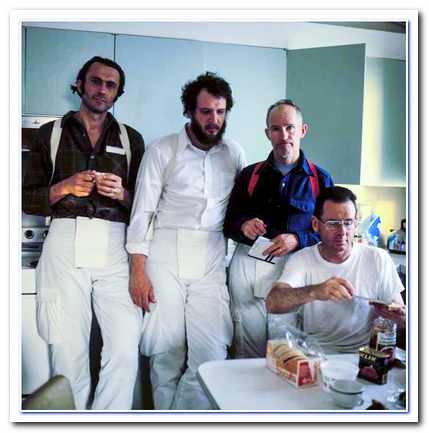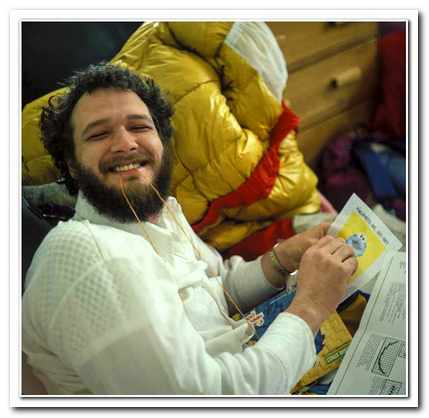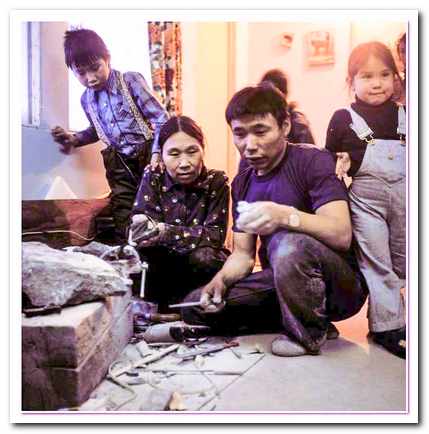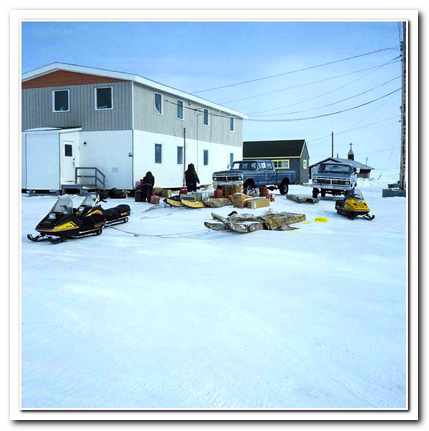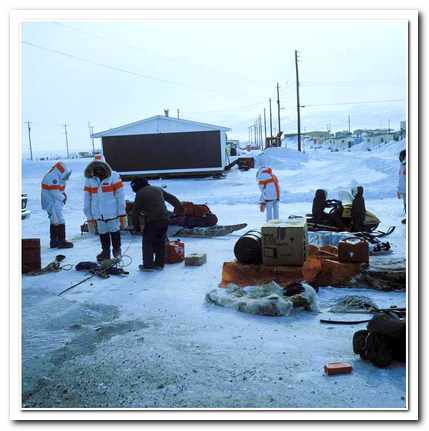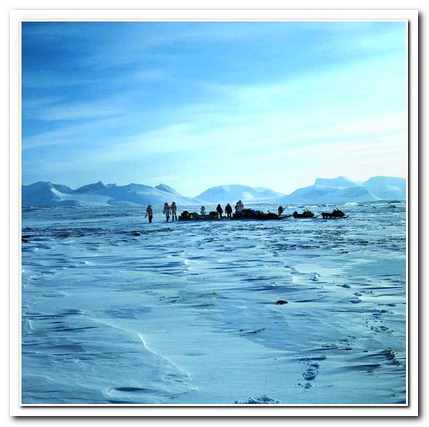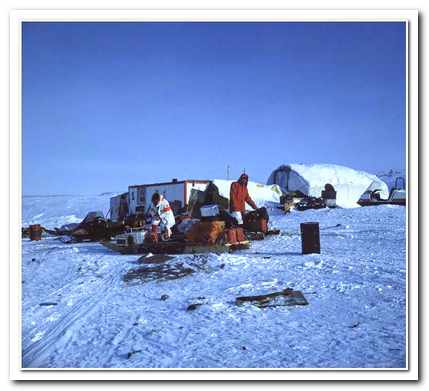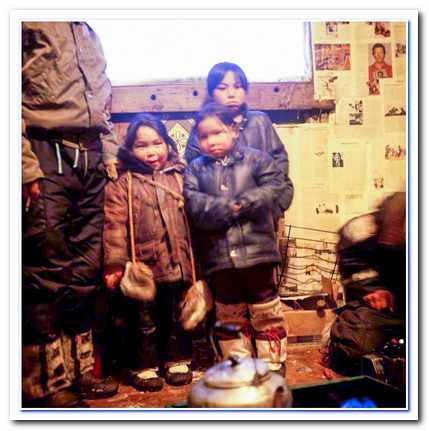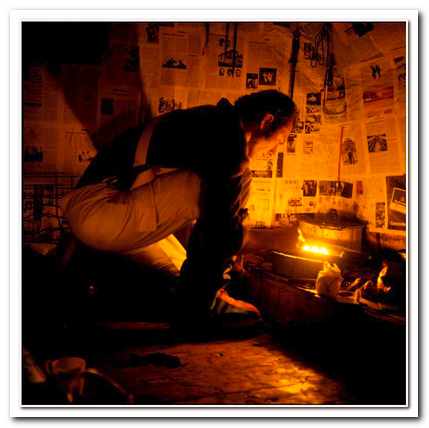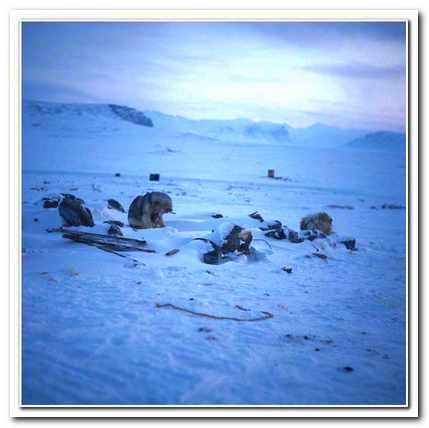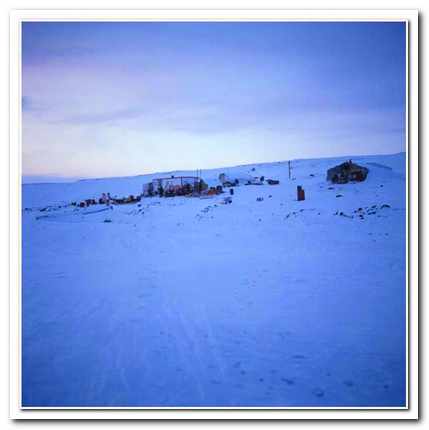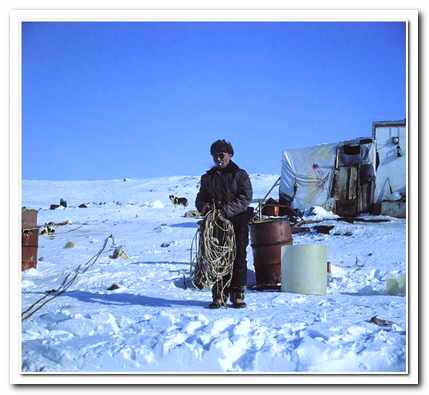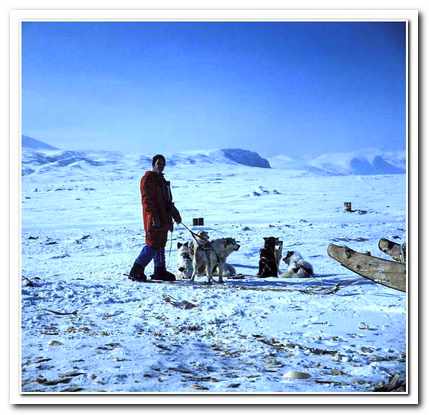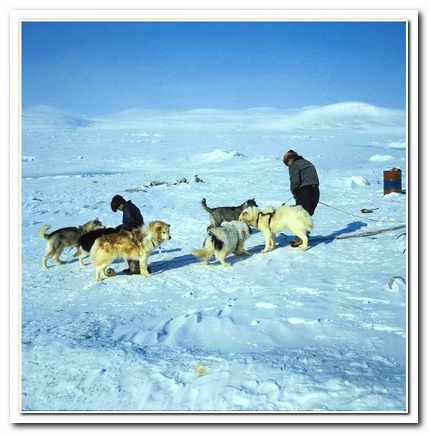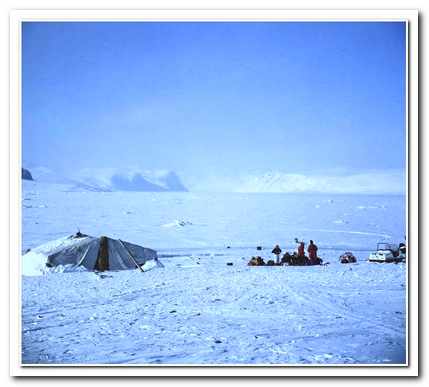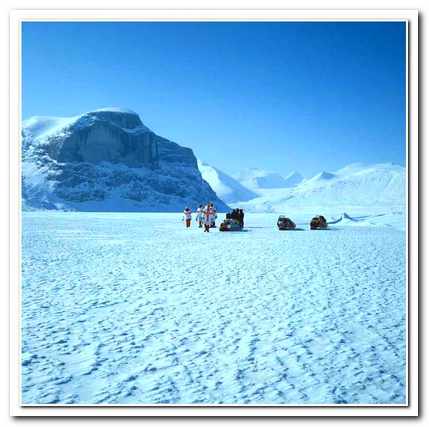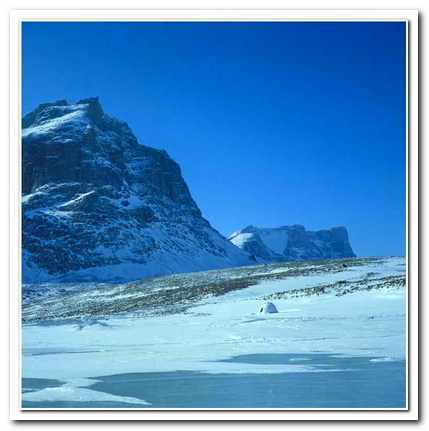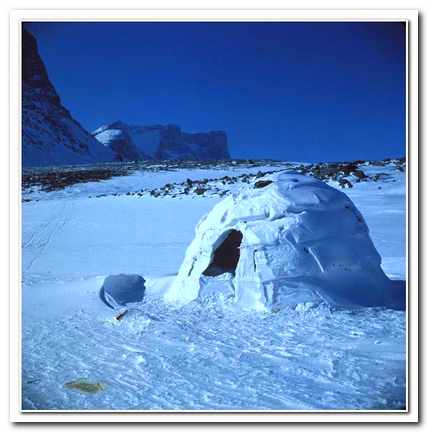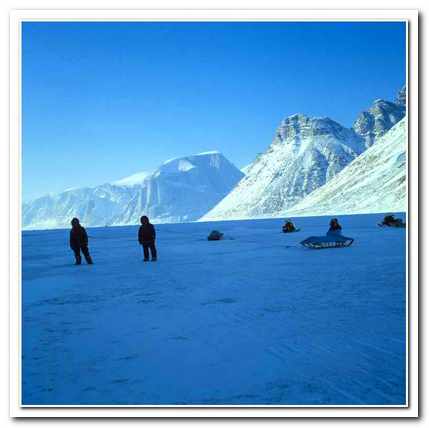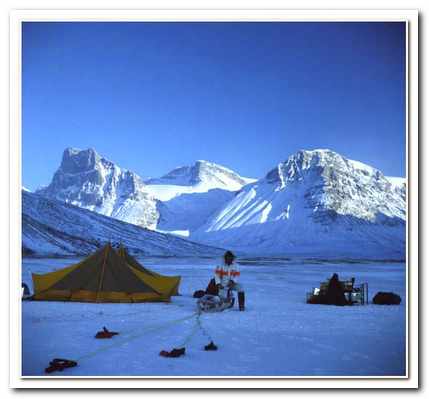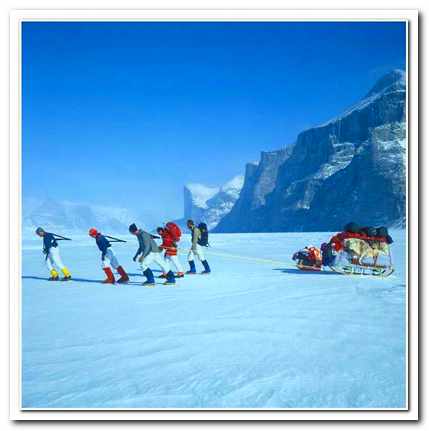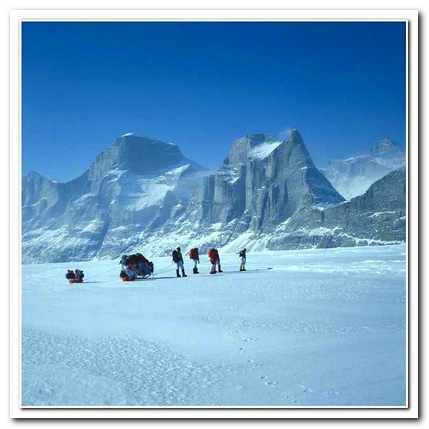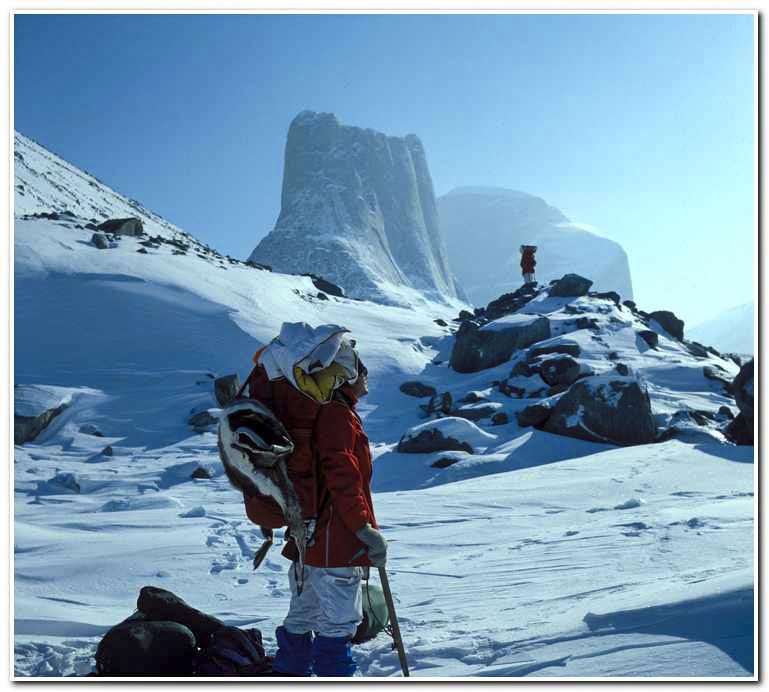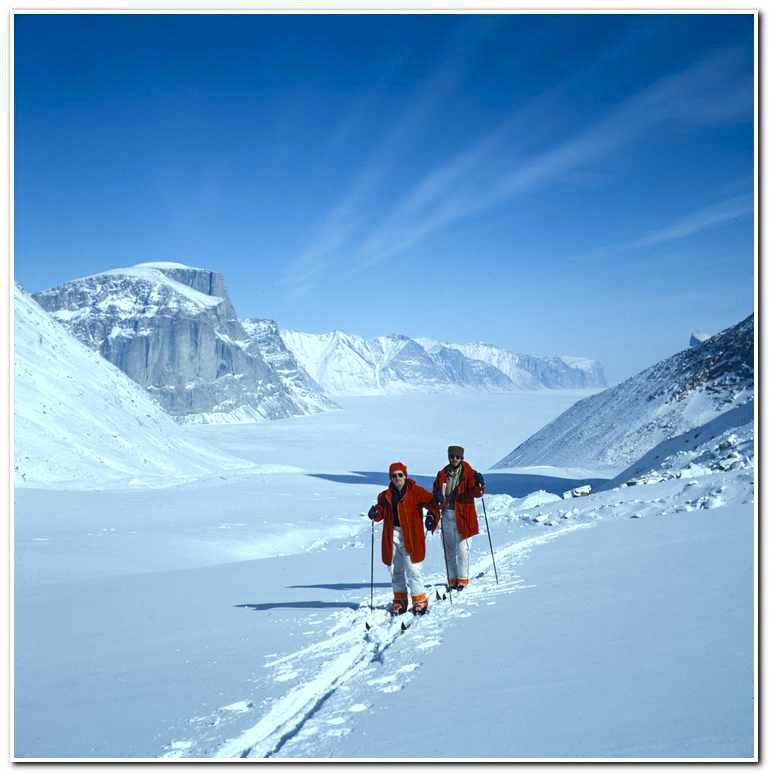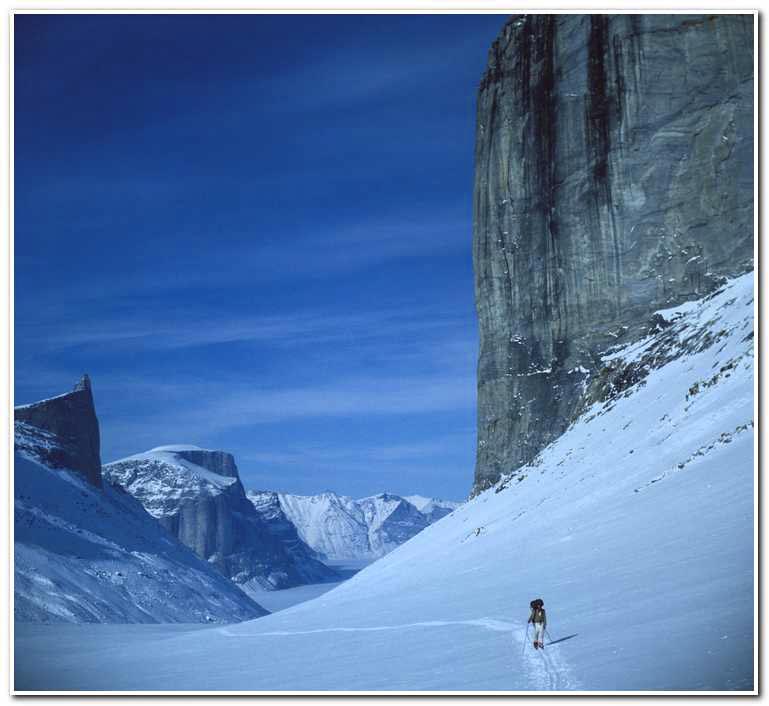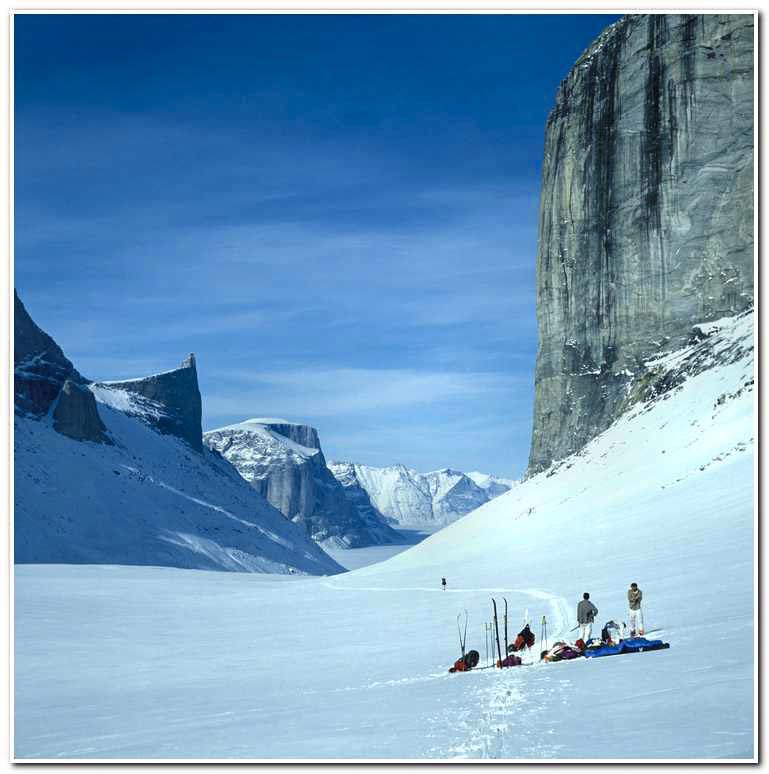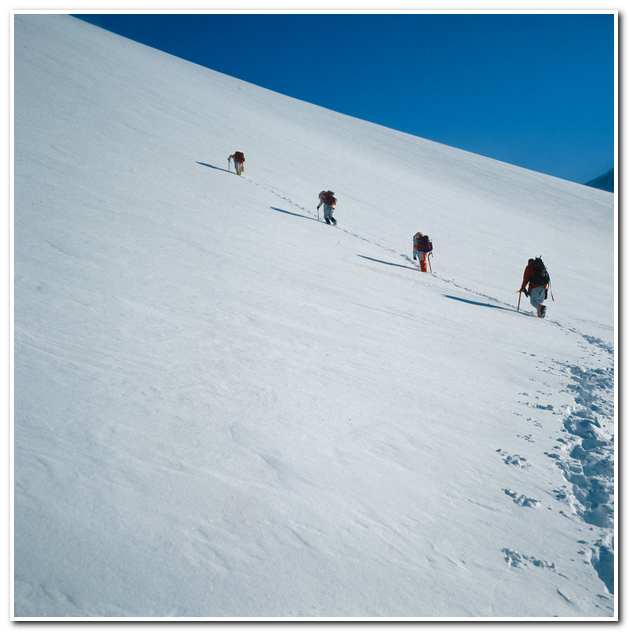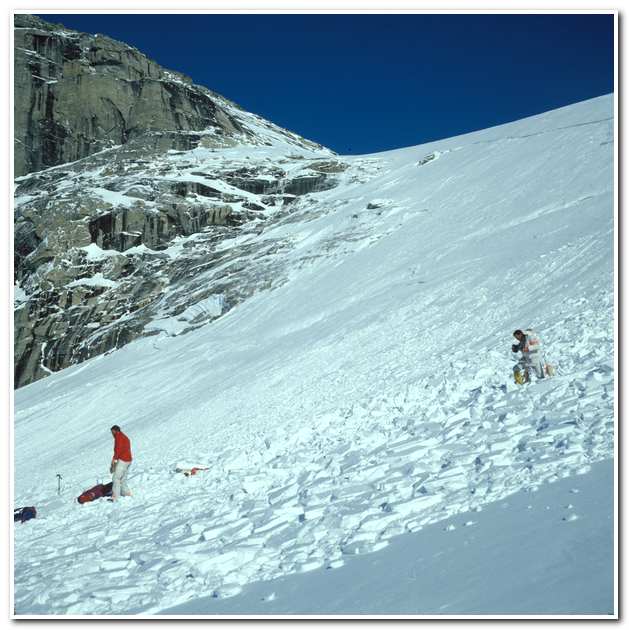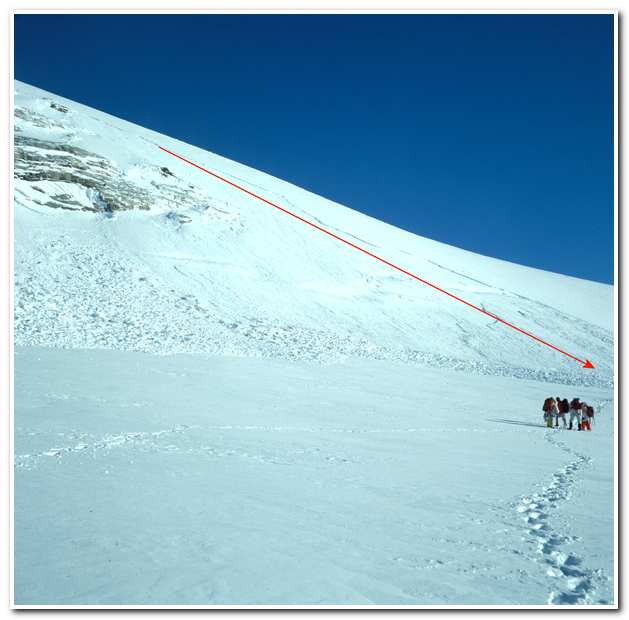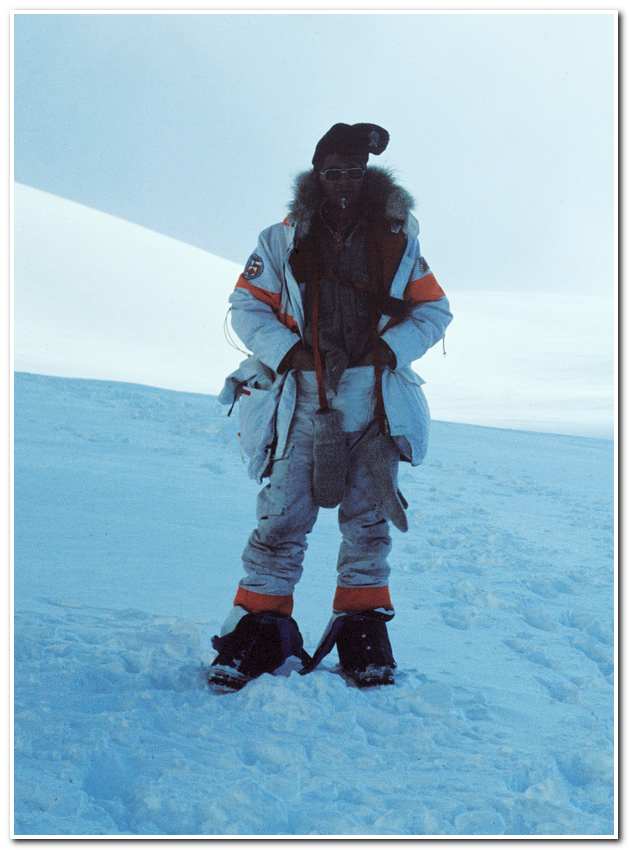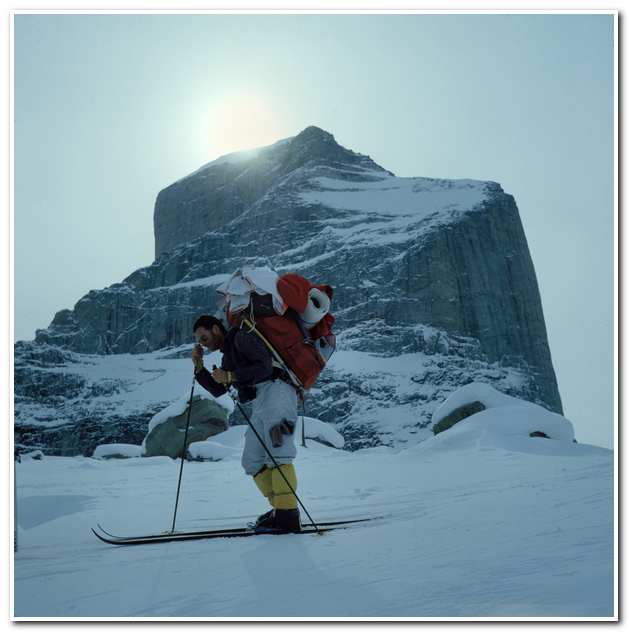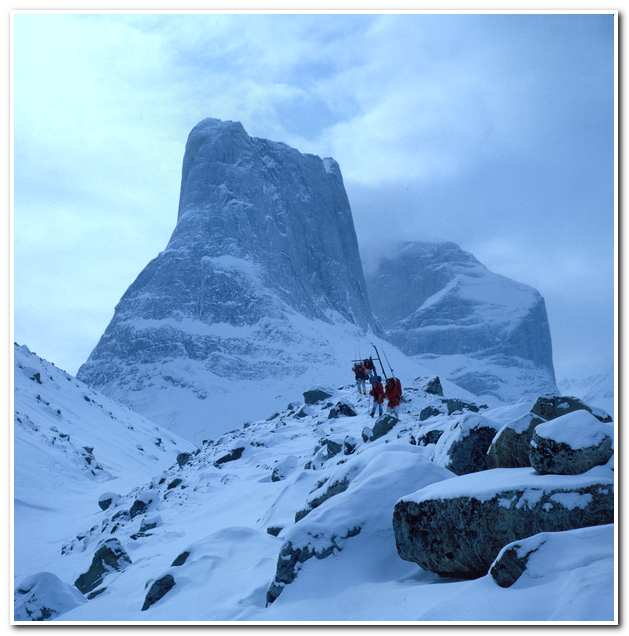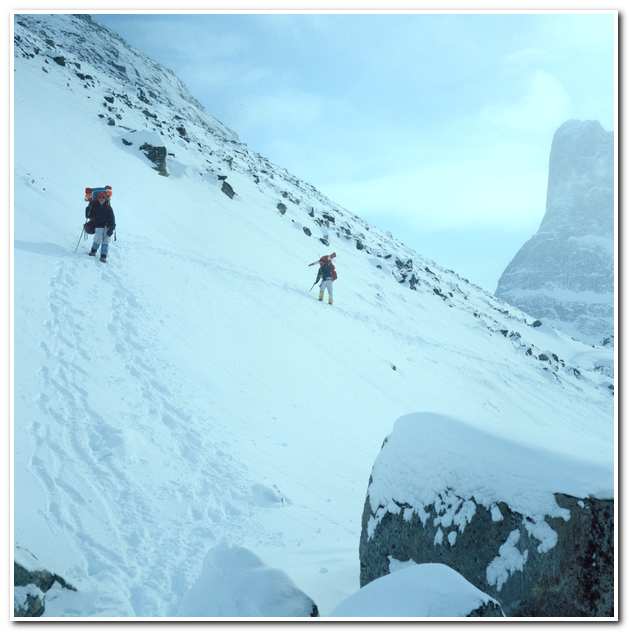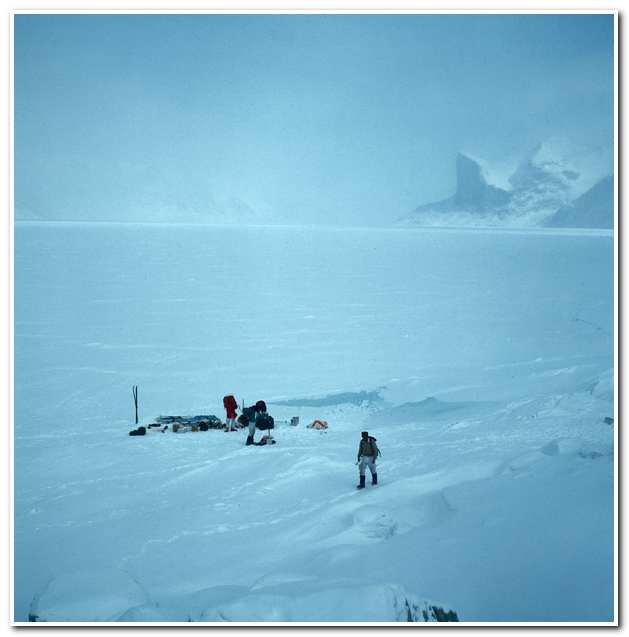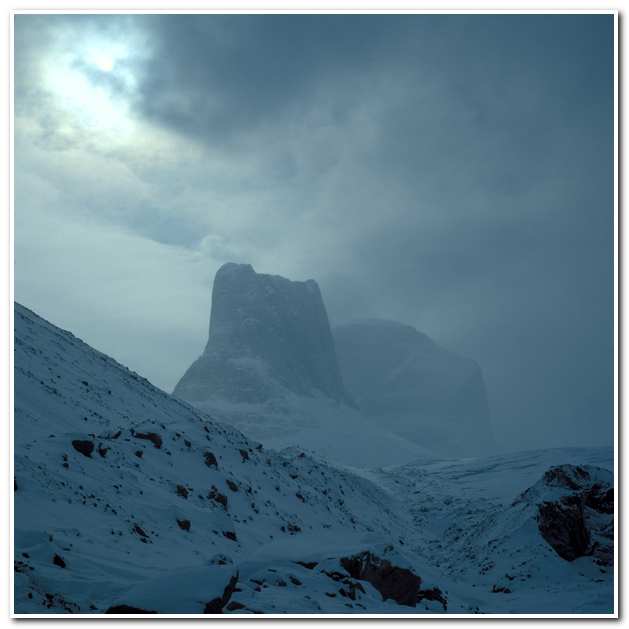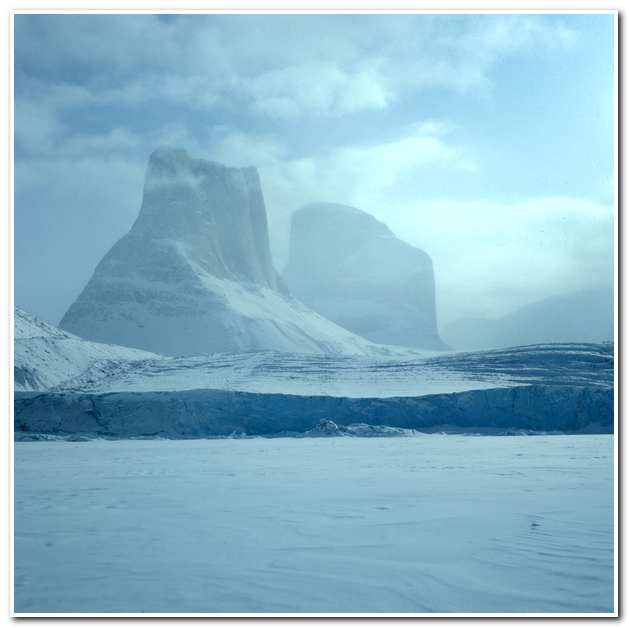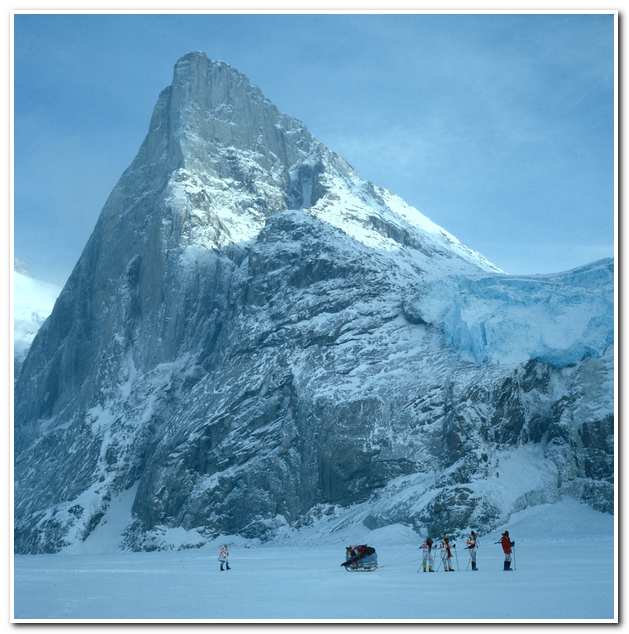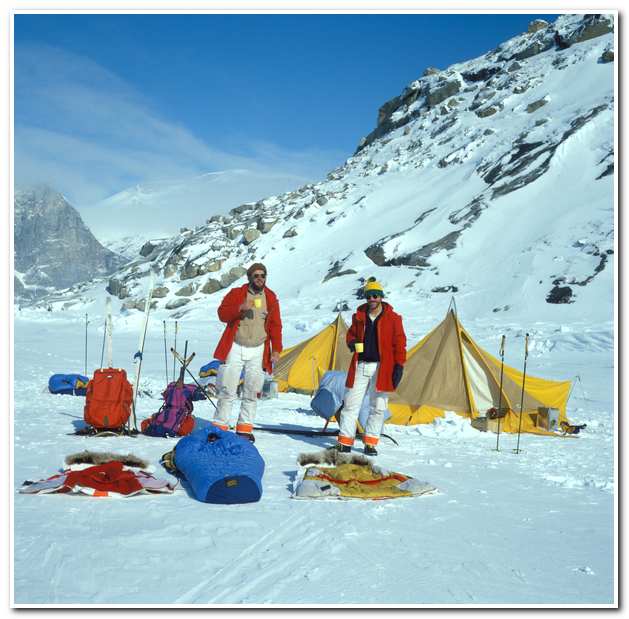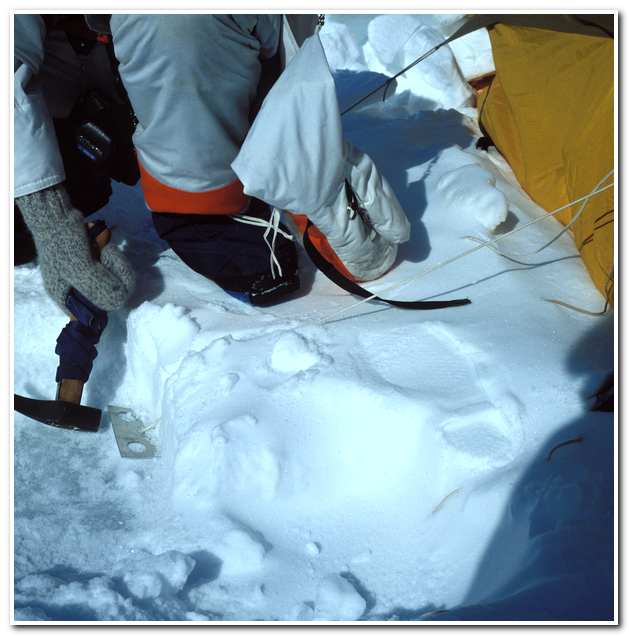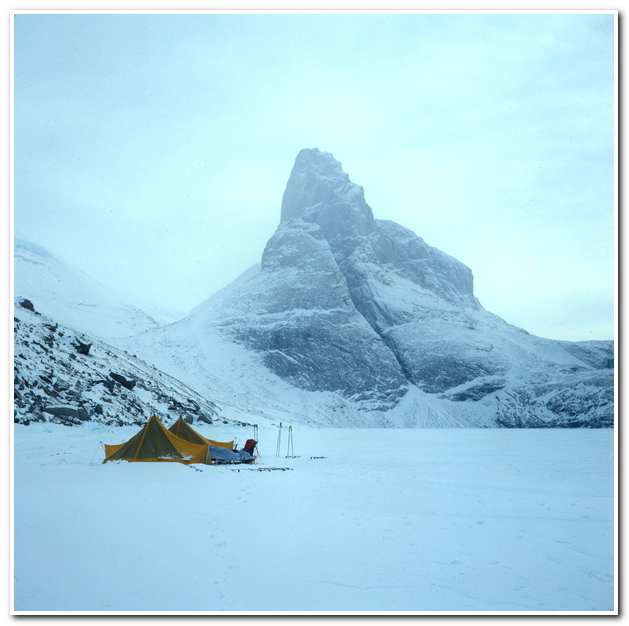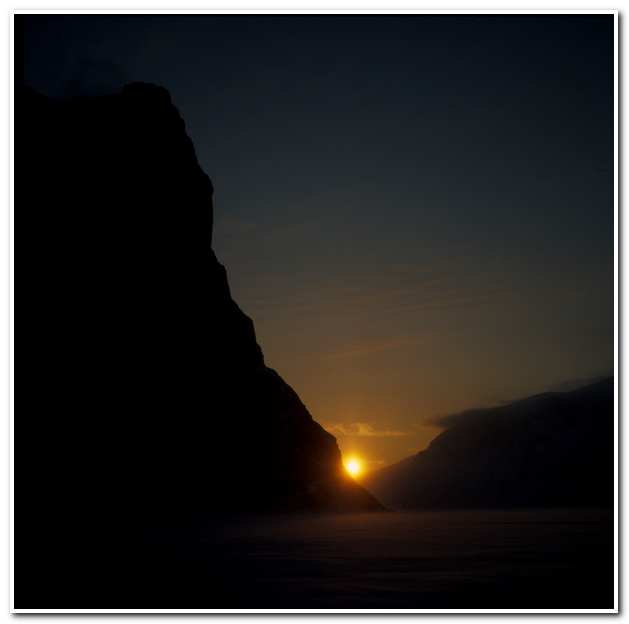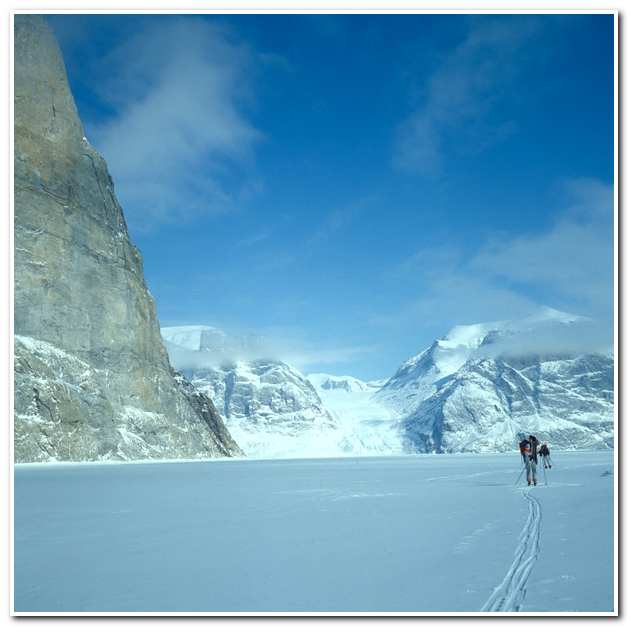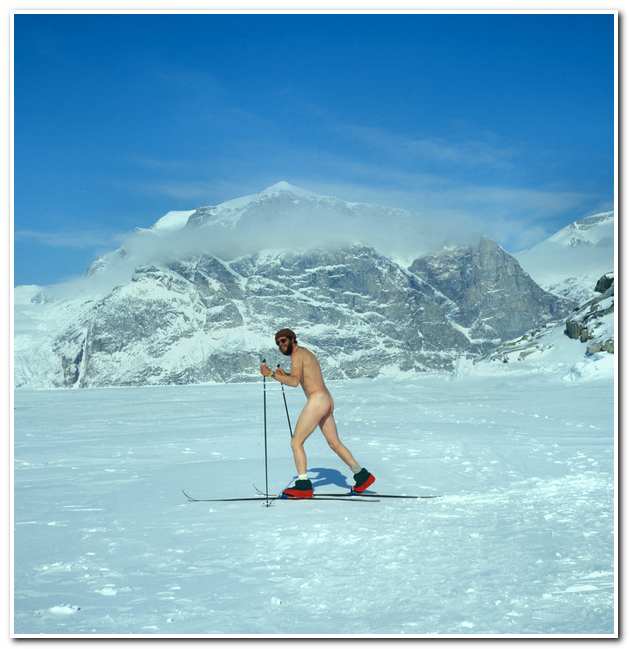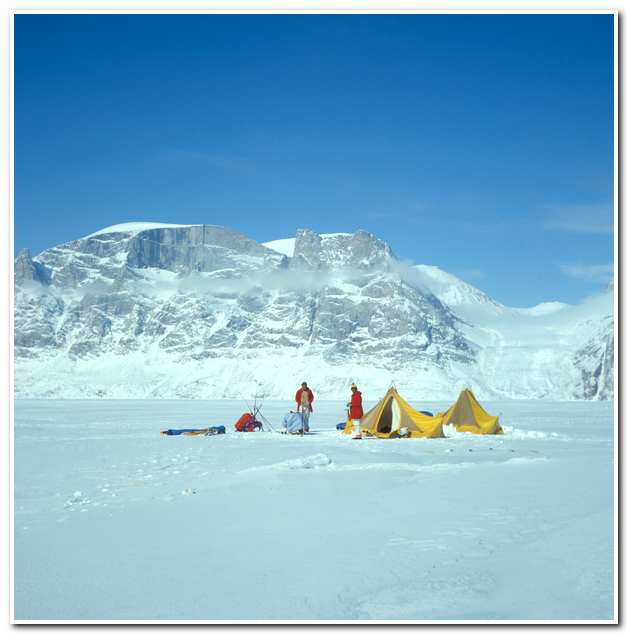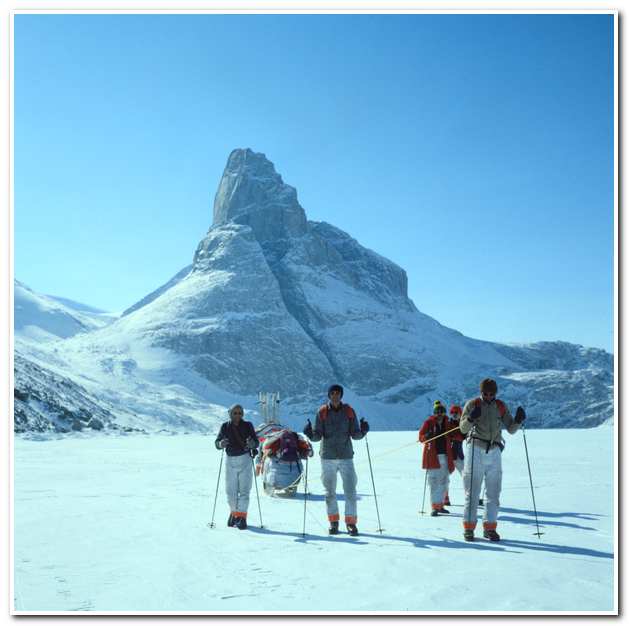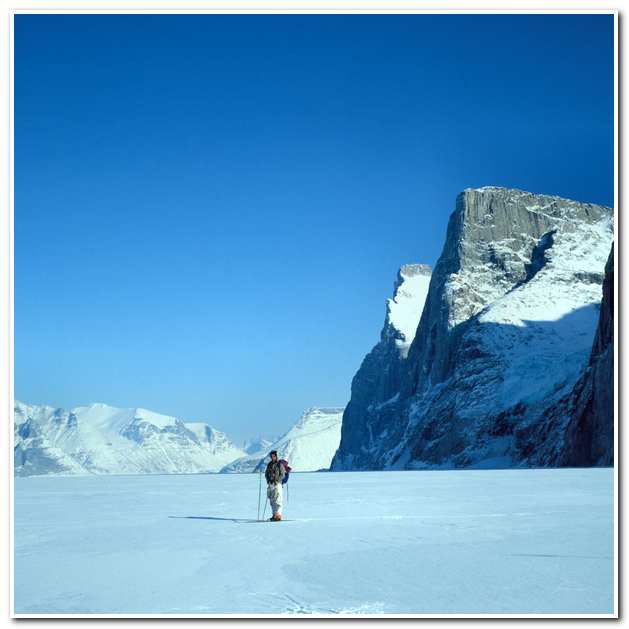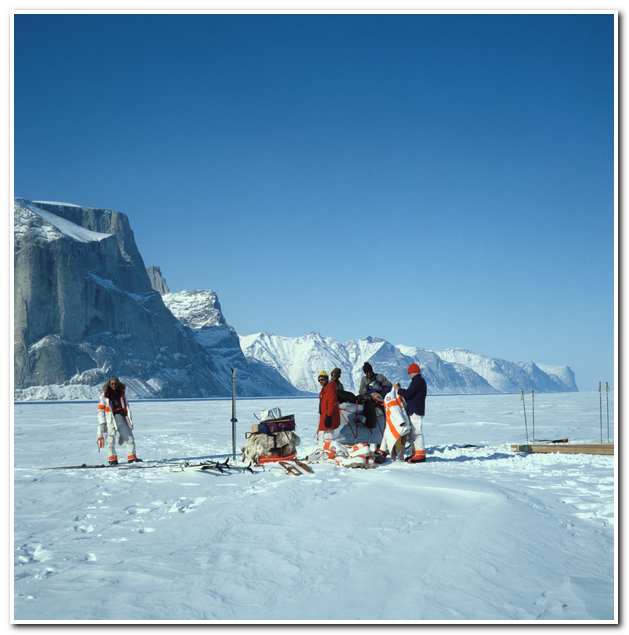Baffin Island Expedition of 1978
TO SAM FORD FIORD
Personnel
The North has got him….Yukonism
Sitting in my office looking out over Puget Sound on a cold grey January afternoon I watch the snow falling outside and my mind once again drifts north, to the arctic. I am not sure why the arctic plays on my mind during quiet times at home. Perhaps it’s the intense contrast in environments that keeps me fascinated; perhaps the stark beauty of the barren lands, ice floes and remote mountain ranges; perhaps the unique challenge and total commitment the arctic demands. Most important, I think, is the escape from everyday life; a comfortable house, a comfortable car, comfortable people and predictable days. Whatever the cause, the arctic has called to me for the thirty years. The North has got me. Come with me on the Baffin Island Expedition.
From
“THE CALL OF THE WILD”
by Robert Service
They have cradled you in custom, they have
primed you with their preaching,
They have soaked you in convention through
and through;
They have put you in a showcase; you’re a
credit to their teaching —-
But can’t you hear the Wild? — it’s calling
you.
Let us probe the silent places, let us seek what
luck betide us;
Let us journey to a lonely land I know.
There’s a whisper on the night-wind, there’s
a star agleam to guide us,
And the Wild is calling, calling ….let us
go.
The Shooting of Dan McGrew
A bunch of the boys were whooping it up in the
Malamute saloon;
The kid that handles the music-box was hitting
a jag-time tune;
Back of the bar, in a solo game, sat Dangerous
Dan McGrew,
And watching his luck was his light-o-love, the
lady that’s known as Lou.
It had been a year since my climbing partner Al Errington and I returned home from our first arctic trip to King William Island. During that trip we man hauled a sled around the remote southern coastline of that isolated, desolate island. We learned a lot about arctic and cold weather travel; much of it the hard way by trial and error. Our teacher had been the harsh arctic environment; with temperatures of fifty below zero and wind chill factors of more than one hundred below. We learned about sled construction and the frustrating and grueling work involved in man hauling our food and camping gear across the frozen Arctic Ocean. As Robert Service would say, “it wasn’t much fun”, but it challenged us in an engaging primal way. If we had learned so much, why were we at it again? We found the arctic to be a diverse and magical place, full of starkly beautiful scenery, and a place of physical and mental challenge to meet and overcome the obstacles to unlocking its secrets. This time, we decided to explore the rugged fiords of the north coast of Baffin Island. Baffin Island encompasses some of the most scenic mountain ranges in the world with many fiords filled with granite monoliths rising up over six thousand feet out of the water and crowned with hanging glaciers. We chose Sam Ford Fiord as our objective. According to our research, few climbers had ever challenged the daunting peaks in this area and we would be among the first outsiders to explore these mountains.
For this expedition, Al and I recruited several of our friends from Mountain Rescue groups in Washington State. Jim Shed, a research physicist at the University of Washington. Martin Waller, an engineer at Boeing Aircraft. Brad Albro, a business owner from Bremerton. Lynn Buchanan, a trucking company owner from Yakima. We had all climbed together from time to time and each expedition member had a long resume of climbing and rescue experience. While Al and I were the only ones with actual arctic experience, the rest of the team exuded enthusiasm for the project and could be counted on in a pinch to do the right thing.
April 11, 1978. The big day had arrived. The team had spent the last several months planning the details of the expedition including food menus, climbing equipment lists, and travel arrangements. In addition, Al designed and built the sled we would use to transport our supplies across the sea ice of Sam Ford Fiord, an inlet off Baffin Bay, on the north coast of Baffin Island. We packed our food in five-gallon press lid cans, each with one day of rations for the six expedition members in each can. We then marked each can with a code, which corresponded to a master list of menus so that we could pick varied menus for each day as we traveled.
We disassembled the sled and packed it in a wooden crate along with five hundred feet of climbing rope and an assortment of ice screws and other climbing gear. In addition to the group food and equipment each member of the expedition brought his own personal gear, much of it specially designed and donated by the Eddie Bauer Company in Seattle, such as sleeping bags, parkas boots, ice axes, books to read. All in all we had a total of about 800 pounds of food and equipment that had to travel with us to the mountains.
But now the months of planning and preparation were over and we were ready to leave for Baffin Island. Lynn drove over from Yakima the night before and stayed at my house. We spent the evening reliving past climbing trips and anticipated the new challenges and adventures that awaited us. The rest of the team arrived early the next morning and we made a final inspection of our food and equipment, double checking inventory lists to ensure nothing was left out. We were away by nine and drove north to the Canadian border crossing at Blaine, Washington. We crossed the border without incident and arrived at the Vancouver airport by noon.
The first leg of our journey was a flight to Montreal. We made stops in Calgary and Toronto, so it was after midnight when we reached Montreal. It had been a long day and we gratefully sacked out at a cheap motel near the airport and got some welcome sleep.
A “packing party”, at Brad’s warehouse in Bremerton, Washington. Note the freeze dried food arranged in rows, left to right. We designed and packed four different daily menus. Each row represents a separate daily food supply for six people which were then numbered one through four.
Each day of rations was then packed into a numbered five gallon press-lid can, for identification, shipping and transport into the field. We used this system so that meals would be varied day to day. Note the sled Al built for the expedition in the background.
Some of the expedition gear at the Vancouver airport being watched over by Lynn, Brad and Al prior to our departure for Montreal. The sled and food supplies had already been delivered to the air cargo area for pre-loading. While we had concerns about being separated from some of our equipment everything went smoothly with people and equipment arriving together in Montreal as planned. April 12, 1978.
We dragged ourselves from bed at seven a.m., quickly showered and went back out to the airport to check in for our flight north to Fort Chimo (now Kuujjuaq) and Frobisher Bay (now Iqualuit). At the airport we met Frank Kirkman, our contact with Canadian Pacific Airlines. Frank was a big help in getting us on board our flight with hundreds of pounds of extra checked items and an expansive list of carry-ons. He also gave us a list of the three best bars in Frobisher Bay. The flight north to Fort Chimo (58.06N 68.25W) was uneventful and we arrived at about noon. The temperature had dropped from the mid fifties at Vancouver to a cool 26F. We refueled and continued north to Frobisher Bay (63.45N 68.30W), arriving at two that afternoon. Stepping off the plane we were greeted by the -17F temperature and I immediately recalled the intensity of the cold Al and I had endured the previous year on King William Island and began to wonder if perhaps we should have planned this trip for May or June instead of mid April. We were met, at the airport, by Andrew Terio, the stereotypical, big bearded French Canadian. Andrew was very outgoing and friendly and insisted on taking us to his house and showing us around town. He had managed to find enough old mattresses around town for each of us, so everyone had the comfort of a real bed for one more night. A little after three that afternoon we took Andrew’s truck and went back to the airport to pick up our gear to resort and repack one last time.
In addition we added several items to our supply list. We bought twelve 1-gallon cans of naphtha (white gas) for our stoves and lanterns and 17 pounds of butter. Seventeen pounds of butter may seem like lot but Al and I had learned on our expedition to King William Island in 1977 that with the cold weather and hard work of sled travel each expedition member would burn 3000 to 5000 calories each day. Since butter is a high source of calories; much of the food menu would be augmented with butter. About six p.m. we had dinner and discussed the Harp seal hunt that had become such a “cause celeb” for various animal rights groups.
While we were in the midst of this discussion Tom Chowns a game officer for the Fish and Game Department came over and talked about polar bear danger in the Sam Ford Fiord area. Tom warned that there would be many bears in the fiords hunting for baby seals during the next few weeks. We had counted on the possibility of encountering bears in Sam Ford Fiord and had packed a shotgun loaded with heavy load slugs and a heavy caliber rife for protection. Tom insisted that we also take six “thunder flashes” (loud cherry bomb like devices used to scare away bears) with us as an extra precaution. He estimated that it would take us one day to travel from Clyde River to Sam Ford Fiord by snowmobile and that the Inuit would charge about $50-$85/day for each of the three snowmobiles and komatiks (sleds pulled by dogs or snowmobile) we would need to haul all the expedition personnel and our gear to our proposed base camp in Sam Ford Fiord. It was a beautiful clear night with a quarter moon and thousands of stars in the night sky. Tomorrow we would head for Clyde River (now Kangigtugaapik or “nice little inlet” in Inuktitut), a small hamlet on the north central coast of Baffin Island. Somehow the spell of the Arctic was beginning to take hold, working its magic with the group. “A high arctic high” enveloped each of us with our own vision of what awaited.
“Empress of Pangnirtung” a Survair DC-3 cargo plane sits on the tarmac at Fort Chimo. This is the plane the expedition would use to complete our flight into Clyde River. While these venerable old warriors were reliable it was still a little unsettling at first to entrust everything to a forty-some odd year old plane flying in the harsh conditions of the Arctic spring.
Note how the engines are sealed shut with wooden inserts and mobile heaters are connected to each engine to keep the oil from becoming so viscous that the engines wouldn’t start.
“Empress of Pangnirtung” on the tarmac at Broughton Island on the north coast of Baffin Island. Our gear is on board and we are about to leave for the final leg of our journey into Clyde River. However, before we leave we are spending a few minutes meeting and exchanging arctic tales with the locals.
April 13, 1978.The next morning dawned clear and cold, -4F. After breakfast we loaded our gear in Andrew’s truck and headed back out to the airport. We transferred everything to a 1940s vintage DC-3, named the “Empress of Pangnirtung” which would fly on ahead over the island, and meet us at Broughton Island, on the north coast. The team boarded a Twin Otter and flew to Pangnirtung, a small village that served as the jumping off point for climbers going into the incredible Pangnirtung Pass area. The flight from “Pang” over “Pang Pass” to Broughton Island was over one of the most scenic mountain ranges in the world. We flew past the huge granite faces of Mts. Asgard, Thor and Turnweather and dozens of other unnamed and seemingly unclimbable peaks.
Once at Broughton Island we caught up with our gear and transferred to the DC-3 for our flight to Clyde Rive (70 30N 68 30W). Since the plane was set up for hauling cargo, there were only small “jump” seats available. Most of us stood up or sat on the cargo and chatted with the pilots.
At two that afternoon we reached Clyde River. The plane was met by twenty to thirty locals who were either meeting friends or relatives or who were expecting cargo. We were offered a ride into town, and so with our gear and three of us in one pick-up truck and rest in another we headed into the village. Our first stop was the RCMP post where we checked in with the resident constable, Tommy Enneraq. Tommy welcomed us and said that the tribal council wanted to meet with us before we left to the Sam Ford Fiord area. Since we would be climbing in the village’s hunting grounds they wanted to be sure we would respect the land. Tommy thought a meeting could be arranged for the following afternoon and that we should be able to leave after the meeting or the next day.
We spent the rest of the day exploring around town and locating Inuit hunters who might help arrange transportation to our base camp. After some asking around we were directed to Abe, Elija and Joanna who were willing to hire out their snowmobiles and komatiks (large freight sleds). After some negotiating we settled on a price of $560 for the round trip to and from our base camp. They too warned us that there were many bears with cubs recently seen at Sam Ford Fiord and to keep a watchful eye.
Since we had no place to stay Tommy let us set up housekeeping at the RCMP building. Our living area included sofa, kitchen, bathroom, and the local jail cell. We spent the rest of the afternoon and evening reading, relaxing and generally goofing off. Overall, even though we were frustrated by the delay we spent another unexpectedly comfortable night in the north.
April 14, 1978. We spent the morning waiting for the council to meet. More reading and walks around town. Brad surprised everyone by digging around in his gear and coming up with a Cookie Monster needle point project.
About noon Abe came by and told us the meeting with the council would be at 1:00 p.m. He also offered us a slab of raw caribou meat to take with us. Caribou is a ubiquitous food source among the Inuit. It is a convenient high protein, high calorie meal. A large piece of raw caribou and a hunting knife or uloo is often found in the corner of Inuit kitchen/living rooms. Family and guests are free cut off a slice or two whenever they feel hungry. In the arctic meal times are not usually at a fixed time but rather varied and most Inuit eat whenever they feel hungry without regard to the time of day.
Looking down the main street of Clyde River, an Inuit community on the north coast of Baffin Island. Snowmobiles are the main form of transportation during the winter and spring seasons. The fog-like effect in the distance is actually “ice fog” caused by ice crystals suspended in the air by the constant blowing winds throughout the arctic. Note the inlet (Patricia Bay) in the background in front of the mountains. Supplies for the entire year are shipped in each summer by barge.
“Chef Brad” and assistant Jim whipping up a gastronomic treat in the kitchen of the RCMP post. The Clyde River Constable, Tommy Enneraq graciously allowed us to use the RCMP building and facilities during our stay in Clyde River.
Ice fog and wind blown snow obscure the visibility outside the entrance to the Hudson’s Bay store in Clyde River. We shopped here for some last minute supplies while waiting to meet the Inuit village council. Seeking their permission to travel to Sam Ford Fiord was an important step in the process of being welcome by the Inuit.
One of the sponsors of the expedition was the Eddie Bauer Company. In exchange for financial support we agreed to help design a new line of expeditionary clothing and test it in the extreme conditions of the arctic. Here Al is sitting in a 20 – 30 mph wind taking a temperature reading. Temperature readings, both inside and outside the clothing were taken and recorded to test the insulating value of the clothing.
Al, Brad, Marty and Lynn enjoying lunch in the RCMP kitchen. You can begin to see the frustration in their expressions as the waiting for the weather to clear and the Inuit Council to meet continues. Note the Spam can on the table. While in Clyde we exhausted the different ways of preparing Spam. Spam in the morning, Spam in the evening, Spam at supper time.
Brad with his Cookie Monster needle point project. Sometimes there is just no explaining genius!
Main Street in Clyde River. The wind was blowing a constant 20 mph with gusts to 40 mph causing a heavy ice fog. Even in these conditions, walks around town and sightseeing were a welcome break in the monotony of waiting for the weather to improve.
Alooloo Inutiq, an Inuit stone carver with his wife and children. We visited Alooloo and his family while in Clyde River. I bought a pair mittens, made of puppy fur, from Alooloo’s wife which I used on several future arctic expeditions. They were very warm and light weight, the equal of any modern technology mittens I have run across.
While we waited, Abe showed us how Inuit hunters identify seal holes on the sea ice. He said the seals scratch a breathing hole through the ice from the underside with their flippers. Blowing snow then forms a dome (called an “eg-ga-lu”) over the hole leaving a protected breathing space for the seals to use during the winter months. The seals often “haul out” through these holes and lay on the ice “sunning” themselves during the spring and summer months. It is during these haul outs that they become prey for the polar bears who roam the ice pack.

At one time, long ago, the crow spoke.
A man was caribou hunting.
While the man was away the crow flew to the hunter’s village
And told the people, “ the hunter has killed two fine caribou.”
The man’s wife on hearing this threw out all the old meat,
expecting the hunter to bring back two fresh caribou.
When the hunter returned he had only two lemmings and was
angry with the crow for telling a lie. He said the crow spoke too much
and he could speak no more. So now the crow doesn’t talk.
We had hoped to begin packing the komatiks after the Council meeting, but by four-thirty that afternoon the wind was blowing 25 – 30 mph with gusts to 40 mph. so we decided to wait for better weather before starting out for Sam Ford Fiord.
One of the realities of arctic travel is the waiting; waiting for the weather, waiting for bush pilots, waiting for supplies, waiting for repairs to equipment. The arctic traveler soon learns the art of creative waiting, finding things to do to pass time. The arctic enforces a slow down from the everyday pace most people from the outside are used to.
While we waited for the weather to improve we called on Alooloo Inutiq, a local soapstone carver. Alooloo offered us a piece of caribou which we cut from a slab in the corner of his living room/workshop. It was very tender and tasted pretty good but it had a long aftertaste that was a little gamey. We watched Alooloo carve a pair of dancing bears out of soapstone with a hacksaw, files and an electric drill.
Later, back at our base camp in the RCMP building Abe visited and we talked about the upcoming summer hunt. We learned that the Village of Clyde River had a quota of ten narwhale and 42 polar bears that year. Abe and the other Inuit hunters in Clyde expected that Sam Ford Fiord would be the best polar bear hunting.
When out of the night, which was fifty below,
and into the din and the glare,
There stumbled a miner fresh from the creeks,
dog-dirty, and loaded for bear.
He looked like a man with a foot in the grave
and scarcely the strength of a louse,
Yet he tilted a poke of dust on the bar, and he
called for drinks for the house.
There was none could place the stranger’s face,
though we searched ourselves for a clue:
But we drank his health, and the last to drink
was Dangerous Dan McGrew.
April 15, 1978.The wind calmed down a little overnight and an expectation built that today would be the day we would hit the trail. The people and their stories and lore were interesting, but our forced inactivity had made us anxious to get to our base camp and be in the mountains. By noon the wind had calmed, and our three Inuit guides arrived with snowmobiles and komatiks eager to leave. We organized our gear one last time and began packing the komatiks for the trip.
Komatiks are the cargo sleds that the Inuit use to haul gear and supplies on their travels outside Clyde River. They are about 15 feet long and three feet wide, and made of wood with ironclad runners. Most Inuit use snowmobiles to pull the komatiks, but a few traditionalists still use dogs. We had three drivers, Abe, Jona and Tupingnun, and three komatiks, each capable of carrying two passengers and their gear. We sat on caribou hides for warmth and cushioning from the bone jarring ride. In addition, passengers all wore their warmest clothing and huddled deep into their hooded parkas in a futile attempt at gaining protection from the cold and wind.
After the weather cleared and the winds died down we began loading the komatiks for the trip to Sam Ford Fiord.
Partially loaded komatiks.
Note the caribou hides next to the komatik in the foreground. After the komatiks were loaded a caribou hide was thrown over the top of the load so the passengers would be insulated from the cold.
Two hours and about twenty-five miles from Clyde we came to the frozen Kogalu River where we stopped to stretch and savor our first glimpses of the distant mountains of northern Baffin Island. After a half hour rest for hot tea and soup we “saddled up” and continued on toward Eglington Fiord.
We left at 2:30 p.m. and drove for two very long cold hours before stopping at the Kagalu River. We enjoyed the +10F sunny weather and even though riding the komatiks was brutally rough and cold it was good to be on the trail at last.
Once again Al and I traveled through an enchanted land of ice and snow accented by frigid temperatures. The trail was generally flat snow covered terrain interrupted by frozen streams that flowed from the mountains across our path to nearby Baffin Bay. Here and there tufts of dried tundra grass poked through the snow cover. Rocky outcroppings rose up every so often, and glimpses of the granite peaks rising in the background contrasted with the general whiteness that dominated the view.
Everything around us had a hard edge to it. But even with that hard edge it was one of the most awe inspiring places I had ever seen.
Arriving at David’s home near Ravenscraig Harbor in Eglington Fiord.
David, an Inuit, who looked to be in his early sixties, lived at this outpost, with his wife and his son’s family. He preferred living off the land rather than living in Clyde River and felt it was important to teach his son and grandchildren the “old ways” of subsistence off the land.
Unloading the komatiks at David’s camp. Our generous host insisted that we house ourselves in one of the several huts that made up his camp.
David’s two granddaughters examine the kabloonas (white men) who have come to visit. David’s grandson Easa solemnly observes from the background. Note the sealskin mitts and mukluks.
A more relaxed Easa poses next to one of our loaded komatiks.
Al, lighting the seal blubber lamp which supplied both heat and light to our little hut at David’s camp. Note the walls of the hut are lined with old newspapers. We weren’t sure of the origin of this construction technique but it made for interesting reading.
Our seal blubber lamp gave off a warm glow and provided an authenticity to our cozy hut.
David’s sled dogs shield themselves from the cold and wind. Sled dogs are not treated as house pets in the arctic but purely as working animals. David told us that he had started out the previous winter with about a dozen dogs but that the polar bears had killed all but six.
David’s camp in the fading evening light.
At seven that evening we reached an outpost camp near the mouth of Eglington Fiord where and Inuit family lived.
David, the owner, had lived there for the past year, living off the land and raising his family in the old traditional Inuit ways instead of living the white man’s way in Clyde River. David invited us to stay at his camp and insisted on our using his son’s hut for our stay. After stowing our gear and warming up we visited David and his wife. While neither one of them spoke English, Abe, once again, acted as interpreter and we spent a fascinating evening hearing David’s stories. His grandson Easa, age seven, hunts caribou and seals with his father and grandfather.
David told us that there were many polar bears in the area and that during the winter he had lost about half of his sled dogs to the bears. As we talked we ate bannock, the Inuit bread, and sliced off pieces of caribou meat from the 30 – 40 lb slab on the floor in the corner of the family room and drank “tundra tea” made from wild herbs growing in the hills around David’s hut. After a couple of hours we returned to our hut and lit the seal blubber lamp that supplied heat and light then rolled out our sleeping bags on the raised sleeping platform in the middle of the floor.
About ten, Abe brought his snowmobile engine in and began overhauling it! Al and Abe cleaned the rings and pistons and cleaned the spark plugs. By midnight the engine was back together again and the snowmobile was ready to go.
There’s men that somehow just grip your eyes,
and hold them hard like a spell;
And such was he, and he looked to me like a
man who had lived in hell;
With a face most hair, and the dreary stare of
a dog whose day is done,
As he watered the green stuff in his glass, and
the drops fell one by one.
Then I got to figgering who he was, and
wondering what he’d do,
And I turned my head – and there watching
him was the lady that’s known as Lou.
April 16, 1978. During the night the temperature dipped to -20F and occasionally David’s sled dogs set up a howling, but all in all we had a pleasant night snug in our hut. After breakfast and tea at David’s hut we helped David hitch his dog team to his komatik.
Helping David with the dogs was a memorable experience. David had me stand on a little mound near his hut while he gathered the dogs, one at a time, and brought them over to have me hold. The first one or two dogs presented no particular problem, but by the time I was trying to hold onto five or six very aggressive Greenland sled dogs, all wanting to go a difference direction, things degenerated quickly. Al later commented that it looked as though I was in the middle of a sea of boiling dogs to chest height. This sight seemed to be hilariously funny to all concerned but me. At last, seven year old Easa entered the fray, beating the dogs into better behavior with a whip handle. David then took each dog in turn and attached its harness to a ring attached to the front of the komatik. After all the dogs were made fast, David climbed on the komatik and shouted to his team and he was off. We watched as he quickly disappeared down the fiord and into the horizon in search of fresh water ice for his family’s water supply.
David setting out his dog team’s harness in preparation for the trip down the fiord to gather fresh-water ice for cooking and domestic use around camp.
The author holding David’s dog team just before the dog fight broke out.
David and Easa hitching the team to the komatik.
Preparing to leave David’s camp before heading down Eglington Fiord for Revoir Pass and Sam Ford Fiord.
Reloading the komatiks with the expedition’s gear. Note the five gallon cans of food and the caribou hide for the “comfort” of the komatik passenger.
After David left, we loaded our komatiks and started down Eglington Fiord toward Revoir Pass, which we planned to cross, and then descend into Sam Ford Fiord and our base camp. The scenery was inspiring, to say the least. We were heading up the fiord toward the mountains which rose impressively to heights of three or four thousand feet. At the head of the fiord we were riveted by the sight of the fanglike Eglington Tower as it came into view, jutting up over five thousand feet. At the head of the fiord we turned and started up over Revoir Pass. At the base of the pass was an igloo that had been built and occupied several weeks earlier by an Inuit hunter. Just above the igloo we had to lighten the komatiks for the pull up Revoir Pass so we got off and walked to the pass. At the pass we stopped for tea and to admire the views. Just south of the pass rose a truly impressive rock tower, three thousand feet high that we named the “railroad spike”.
Traveling down Eglington Fiord behind the snowmobiles nearing the vertical world of Baffin’s north coast. Note the gasoline drum on the back of the snowmobile. All of the fuel for the round trip to Sam Ford Fiord had to be carried from Clyde. The fuel drums or a passenger served as ballast for each snowmobile pulling a loaded komatik.
Stopping to stretch and have a hot tea in Eglington Fiord, about a third of the way from David’s to Revoir Pass. The surrounding mountains were beginning to grow to impressive dimensions, raising 3000 – 4000 feet directly out of the fiord.
Nearing the edge of the sea ice (foreground) at the head of Eglington Fiord. It is here that we went ashore and continued up, past the igloo, and over Revoir Pass before descending into Swiss Bay at the edge of Sam Ford Fiord.
An Inuit hunter’s igloo below Revoir Pass in the background.
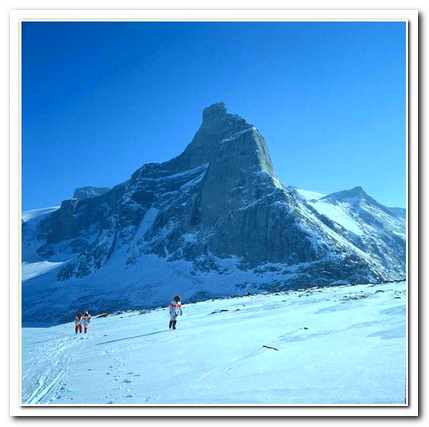
Looking from the summit of Revoir Pass toward Swiss Bay on Sam Ford Fiord.
Our Inuit guides testing our sled on the ice of Swiss Bay at our Base Camp. The peaks on the Stewart Peninsula, north of Broad Peak, are visible in the distance.
Al setting out the sled harnesses next to the tents at our Base Camp in Swiss Bay. Our food and equipment cache is to his left. Pioneer peak is in the upper left. The route over Revoir Pass, leading to Eglington Fiord, starts in the background and continues out of sight to the left beneath Pioneer Peak.
The peaks in this area are very reminiscent of the peaks of Patagonia and dwarf anything Yosemite has to offer in terms of numbers and the shear magnitude of the vertical granite faces and splendor of the surrounding scenery. During the 1990s this area would become a Mecca for serious rock climbers looking for new challenges.
Shortly before three that afternoon we reached the shoreline of Swiss Bay on Sam Ford Fiord, and a short time later we arrived at our base-camp site. Across the fiord we had a view of the massive granite peaks on the Stewart Peninsula. We stared in disbelief at a granite monolithic tower higher then the great face of El Capitain in Yosemite Valley. Abe and the other drivers helped us make camp and we all enjoyed one last cup of tea together before they left with the understanding that they would return on May 2nd to pick us up for the return trip to Clyde River. Our plan was to pull our sled, loaded with gear across the fiord the next day and start up the glacier below Broad Peak, hopefully putting us in position for what we hoped would be a breathtaking first ascent.
A beautiful nearly half moon shone brightly when we turned in that night with a palpable nervous excitement in anticipation of the days ahead.
His eyes rubbering round the room, and
he seemed in a kind of daze,
Till at last that old piano fell in the way of his
wandering gaze.
The rag-time kid was having a drink; there
was no one else on the stool,
So the stranger stumbles across the room, and
flops down there like a fool.
In a buckskin shirt that was glazed with dirt
he sat, and I saw him sway;
Then he clutched the keys with his talon hands
—my God! But that man could play.
April 17, 1978. After a nervous night, due to a case of “big ear,” after Lynn became convinced he heard a bear around the camp; we arose to a beautiful clear day.
Man-hauling a heavy sled across the sea ice is physically challenging as can be seen in the picture Lynn, Marty, Al, Jim and Brad lean into the traces as we leave Swiss Bay and enter Sam Ford Fiord. The sea ice in the fiord is 6-8 feet thick.
Heading out across the frozen surface of Sam Ford Fiord, on our way into Walker Arm (straight ahead). We named this series of 4000 to 5000 peaks “Wall Street”. Our route continued around the point of rock projecting out from the left then up a glacier to the left toward Broad Peak.
The west face of Broad Peak, 6150 feet, from Sam Ford Fiord. Even from five miles distance this giant granite peak is breathtaking as it rises directly out of the fiord. Our route lay around the backside of the peak in the right foreground, behind Broad Peak, up to the col to the left of Broad Peak and then up the ridge-line to the summit.


We were packed and underway by nine a.m. and the newcomers to arctic travel got their first taste of man hauling a sled across the ice. Al and I were reintroduced to the joys of being in harness once again and soon began to doubt our sanity that this was a good way to spend our vacation. We had good ice conditions until we approached Walker Arm when the drifted snow began to bog down the sled making for extremely tough going. After four hours and seven miles of brutal work in our harnesses we reached the foot of the glacier, which emptied into Walker Arm and ran gradually upward into a glacial valley on the west side of our objective.
We took time out for a lunch of tea and fruit cake, which was so frozen we had cut it with our hatchet, and started with our first relay loads up the glacier to establish Camp 1. Each one of us carried 70 – 80 pounds. We took turns kicking steps and breaking trail in the ankle to knee deep snow. There were many more crevasses than we thought there would be but by staying along the rocky lateral moraine, on the east side of the glacier, we were able to avoid most of them and made good time. After about a mile and a half and 800 feet of elevation gain we unloaded and returned to the fiord for another load. Even though it was difficult work, the clear crisp weather and scenery seemed to make the effort worthwhile and nobody complained.
By six p.m. most of our equipment and supplies had been brought up and Camp 1 was established. Our new camp put us in a position about one mile away from Broad Peak’s shear 5000 foot West face. From our location our objective looked like a mile high tree stump. In addition, there were equally impressive peaks visible as we looked back down the glacier and out across the frozen waters of Walker Arm.
We spent the evening hours reminiscing about past climbs and estimating the challenges we would face in the coming days.
April 18, 1978. Another beautiful day dawns in the arctic. Calm, clear, and -20 F. We were starting to get an accumulation of ice inside the tents as a result of the freezing of water vapor given off by cooking inside and three people spending nearly twelve hours a day inside. The water vapor rises and then, on contact with the outside wall of the tent, freezes. Over time this ice layer builds up and then flakes off and falls on the occupants of the tent, melting and slowly getting everything in the tent damp. This dampness then adds to the water vapor in the tent that rises and refreezes………..This cycle can only be broken if, from time to time, everything is removed from the tent and dried in the sun. Then the walls and ceiling of the tents are beaten, knocking the ice to the floor where it can then be swept up and out of the tent. Staying ahead of the moisture problem is critical to long term comfort for any long term stay in below zero temperatures.
Another issue is the buildup of ice inside sleeping bags. If the temperature outside the sleeping bag is below about 10 F the water vapor that comes from a warm body sleeping, migrates outward through the different layers of the bag until it reaches a temperature of 32 F. At that point it freezes. If the outside temperatures are cold enough, that freezing point is within the sleeping bag and ice gradually builds up in the insulating layer of the bag. Every night when a warm body crawls into the bag, body heat melts the ice and the occupant is treated to a damp bed. Sleeping bags need to be sun dried every few days to stay ahead of this unpleasant phenomenon.
While the rest of the team cleaned the tents and dried sleeping bags, Al and I went back down to the cache of supplies we left at the base of the glacier to restock our food and fuel supply. The round trip took us about two and half hours and after a late lunch we packed up food and fuel cans and began a difficult one and a half mile march, in deep snow, further up the glacier to the northwest corner of Broad Peak, where we began establishing Camp 2. Even though this relay was as hard as any I had ever done, the scenery was unbelievably dramatic and it made the trip almost enjoyable. After a long day of carrying heavy relays and putting in fresh trail we made our way back to Camp 1, enjoyed a big meal and a beautiful sunset.
Were you ever out in the Great Alone, when the
moon was awful clear,
And the icy mountains hemmed you in with a
silence you most could hear;
With only the howl of a timber wolf, and you
camped there in the cold,
A half-dead thing in a stark, dead world, clean
mad for the muck called gold;
While high overhead, green, yellow, and red,
the North Lights swept in bars?—-
Then you’ve a haunch what the music meant
….hunger and night and the stars.
April 19, 1978. Got up to another bright sunny day, – 12 F. We planned on spending the day establishing Camp 2 and preparing for an attempt on Broad Peak tomorrow. Brad and I left at about ten a.m. to go back down to the fiord for the last of the food and fuel supplies we would need. Marty and Lynn left shortly after us to head for our Swiss Bay Base Camp to bring up the skis and poles we had cached, thinking they wouldn’t be needed. The snow in the upper reaches of the glacier was softer than we anticipated and the skis would make travel much easier in the coming days.
Brad and I reached the fiord in fifty minutes; apparently both the trail and our conditioning were improving with each trip.
The author preparing to leave the sea ice in Walker Arm and ascend the glacier to Camp 1. Expedition members carried between 60 and 80 pounds per load between camps and made at least two relays each time we moved camp. Broad Peak rises in the distance behind the climber atop the rocky moraine at the snout of the glacier.
Marty working his way through ice hummocks and small crevasses as we ascend the glacier toward Camp 1. Walker Arm is visible in the middle distance. Note how pronounced the shadow on the sea ice is; the air is so clear that there is very little distortion, even at this distance.
Camp 1. Note the sleeping bags and parkas drying in the sun. Ice accumulation in clothing and sleeping bags was an ongoing issue and so we took advantage of any sunny weather to keep clothing and gear as dry as possible.
The author packed up and starting out for Camp 2. Broad Peak is visible in the distance and “The Turret” rises 3000 feet above our camp at the side of the glacier.
Looking toward Walker Arm from Camp 2. Note the sleeping bags drying in the sun!
Marty and Brad skiing toward Camp 3. The weather had warmed and only the inner layer of the multilayer parkas was necessary to stay warm.
Looking back down the glacier from Camp 3.
Brad nearly at Camp 3.
Taking a break at Camp 3 before returning to Camp 2 for another load.
We returned to Camp 1 at eleven-thirty, rested and then packed 80 pound loads to go to Camp 2. We reached Camp 2 at a little after one that afternoon.
It was with some relief that we took to the tents, cooked our evening meal and contemplated the rising storm. Outside the wind blew at a constant 25 – 30 mph and we could see huge snow plumes blowing off the surrounding peaks. However, the barometer was steady and we hoped that this indicated a short storm with better weather in the morning.
April 23, 1978. The storm worsened during the night. The wind gusts hit 35 – 40 mph breaking one of the tent poles and partially collapsing a tent.
The temperature climbed to + 20 F so we literally stewed in our sleeping bags which were designed for -30 F to +5 F temperatures. Everything was damp and getting damper the more time we had to spend inside. If that wasn’t enough, the damaged tent was beginning to be snowed under and had to be dug out. Al and I removed the broken tent pole and brought it inside for repair. After repairing the tent and digging out and cleaning up Camp 3 we waited out the remainder of the storm. By one that afternoon the winds were light and the cloud cover began to break, but the conditions higher up in the surrounding mountains were still not safe for climbing that day.
We spent the rest of the day resting, rehydrating and reading. By six that evening the wind was calm and the sky was beginning to clear. We could still see snow blowing off the surrounding summits, but it looked as though tomorrow would be a good day. Everyone was eager to push on and our enforced rest day seemed like such a waste of time. The temperature began to drop, a good sign, and registered +8 F. The cloud ceiling had risen to about 4000 Feet during the evening and it began to snow lightly about eight that night and continued through the night.
April 24, 1978. Bad news. The wind came up again during the night and continued to blow all morning at 20 – 25 mph with gust to 35 mph. In order to preserve our supplies we went on a ration of tea and light food. More bad news, by noon the temperature had risen to +14 F. No climbing today. Things are damper and we have no hope of drying anything until the sun comes out.
Around noon we invited the team in the other tent over for tea and fruitcake. Everyone’s spirits were still high, but if the storm and our inactivity lasted much longer, the enthusiasm of the team would rapidly decline. We had one day of food left at this camp, but we could stretch it to two or three days if necessary. If we ran out, we would have to go down to Camp 2 and bring up some more; a job I didn’t look forward to in this weather. We spent some of the day taking barometer and temperature readings to project when good climbing weather might return. While in the long run it didn’t matter what the weather forecast was, because the storm would clear when it cleared and not before and we would have to wait till then. But weather forecasting is still a way to spend time in the arctic when one is tent bound.
Time Barometer Temperature
1:00 p.m. 28.3 + 8 F
6:00 p.m. 28.4 0 F
7:30 p.m. 28.45 – 2 F
In theory, the falling temperatures and rising barometer were a good sign and meant good climbing weather was coming, but at 7:30 p.m. the wind was gusting at 35 mph bringing the wind chill down to – 60 F.
After dinner I made a set of suspenders for my wool mitts out of nylon tubing which I designed after those made by Shackelton and his crew during their Antarctic expedition in the early 1900s. I had come close to losing my mitts several times in the wind while climbing Broad Peak and in this environment lost mitts would be a serious matter. I was already suffering from mild frostbite and I didn’t look forward to worsening the situation.
By 8:45 p.m. the wind began to subside and expectations soared for a good day tomorrow. During the past two days of confinement and cooking inside the tents, our sleeping bags got very iced up and wet. As a temporary fix to this we took the wool liners out of our parkas and laid them over the bags, hoping that the wool would wick away some of the moisture.
Lights out at 10:30 p.m.
Then o a sudden the music changed, so soft
that you scare could hear;
But you felt that your life had been looted clean
of all that it once held dear;
That someone had stolen the woman you loved;
that her love was a devil’s lie;
That your guts were gone, and the best for you
was to crawl away and die.
‘Twas the crowning cry of a heart’s despair,
and it thrilled you through and through—-
“I guess I’ll it a spread misere,” said
Dangerous Dan McGrew.
April 25, 1978. Conditions seemed to have improved a little overnight. The cloud cover was somewhat thinner and the wind had died down to about 15 – 20 mph. New snow had drifted up two to three feet along the sides of the tents and had to be cleared to keep the tents from collapsing, and equipment outside the tents had to be dug out to keep from being lost. After breakfast we decided to take advantage of the break in the weather, sending Lynn and Brad down to Camp 2 to bring up two more food cans and some bulk butter and cheese as well as another day or two of fuel. The rest of us stayed inside until they returned about noon. It had now been 68 hours inside the tents and cabin fever was beginning to take its toll. Everyone is eager to get out and climb.
By 2:45 p.m. the sun was out, but it was still windy. I tried reading aloud “The Cremation of Sam M’Gee” for a little entertainment, but my performance was met with only tepid enthusiasm. Obviously our enforced inactivity had done little to promote an appreciation of the arts on Baffin Island.
At last! At 4:00p.m., 72 hours after the storm started, the sky was again clear and the winds calm. We hurriedly packed our gear and, while Jim stayed behind to clean camp and dry sleeping bags, Al, Brad, Marty, Lynn and I started out for the summit of the peak immediately south of Broad Peak. Our plan was to go a short distance up the glacier, then climb the long snow slope up to the col between Broad Peak and our objective, then traverse south from the col along a snow ridge to the summit. This route promised to be a short but fun route to another airy perch above Sam Ford Fiord and everyone was particularly eager to stretch and work out a little in preparation for more challenging objectives to follow.
We made good time up the glacier and were soon starting up the snow slope toward the col. The climbing conditions seemed perfect. The fresh snow had all been packed nicely by the wind and most of the trail was on a firm crust so we didn’t have the problem of having to break trail through deep snow. As we approached the snow slope, leading up to the col we took a break for pictures and adjusting clothing before starting the two thousand foot ascent up the slope to the col.
Al, Lynn and Marty led the way with Brad and I following about a hundred yards back. After three or four hundred feet of elevation gain the wind blown snow crust that we were walking on began to break and settle, in “dinner plates” ten to fifteen feet in diameter, every fifty feet or so.
This fracturing was a little disconcerting, but seemed to be localized in nature and not too worrisome. However, as we climbed the slope it became steeper and more unstable. As the lead team approached the snow dome near the top of the slope there was and a loud crunching sound and about a quarter of a square mile of slope sunk down about six inches. For a fraction of a second nothing happened, but everyone knew instantly that we were in big trouble and the slope was going to fail. I looked up toward the lead team and saw a fracture line appear just in front of them and extend both directions about three hundred yards. Within another fraction of a second I began to feel the entire slope begin to slip and Al yelled “she’s going!” We had walked into a huge slab snow avalanche and we each knew that our chances of survival were not good.
As the snow slabs at the top of the avalanche slid they began breaking up and churning, rising in a wave, like crashing surf. The surf line almost immediately engulfed the lead team. Brad and I began running diagonally across the slope, vainly trying to out run the rapidly gaining churning frozen wave front. But outrunning this avalanche would be nearly impossible, it was simply too big. This mass of falling boiling snow was nearly a thousand feet wide, along the fracture line, and at least a thousand feet from top to bottom. Trying to outrun nearly twenty-five acres of moving, boiling snow blocks was futile and I knew it. There was no hope. I was certain in my mind that everyone else was dead, having been through this huge “grinder” (we later estimated the mass of the avalanche at 800 – 1000 tons) making its way at twenty five miles an hour down the slope toward me. I threw away my ice axe and pack to keep from getting either speared or getting dragged down and pinned by straps on my pack.
I was hit by a six foot high wave of both powder snow and wind packed snow blocks. The initial impact threw me onto my back with my feet pointed downhill. I tried to “swim”, to stay on the surface and hoped ride it out, but snow blocks rode up over my back forcing me forward onto my stomach and driving me down under the surface. I kept waiting for my arms and legs to break as I was battered by the snow blocks. My mind filled with descriptions of climbers who had been in slab snow avalanches smaller than this one and had later been described as a sack of broken bones, having been pulverized by the force of the tons of snow cascading down a slope. These thoughts were soon erased as powdery snow began to be pushed into my mouth and nose and breathing soon became my primary goal. I struggled to get a hand in front of my face and keep a small opening for air. After what seemed like an eternity under the snow, I sensed that the snow mass was slowing and that I might survive this ordeal. I was able to pull my parka up over my head and increase my breathing chamber just as the snow stopped.
It was absolutely silent under the snow and the light seemed to shine uniformly from all directions around me. It was impossible to tell how deep I was buried or which way to begin digging to get to the surface. The only thing I could think to do was spit to find which way was up. As it turned out I was facedown at about a thirty degree angle with my feet pointing uphill. I twisted and turned and worked my way around until I was right side up and then thrashed some more until I wormed my way out into the sunlight.
It had been about two minutes since the avalanche had stopped; I was alive and not hurt. What about the rest of the team? Almost immediately I heard people shouting their names, “Al!” —- “Lynn!” —- “Martin!”
I spotted Lynn, Al and Marty about thirty feet away and saw that Al was with Brad who was lying on his back and apparently in need of some help to get out. Miraculously everyone had survived and only Marty and Brad were any the worse for wear.
Lynn, Al, Marty and Brad climbing the slope five hundred above Camp 3 on the way to the col south of Broad Peak.
As the team approached the top of the slope in the upper left a slab snow avalanche swept this entire slope down nearly a thousand feet.
Lynn and Al help Brad get free of the debris that buried him at the base of the avalanche. Note the snow blocks that are characteristic of slab snow avalanches.
The team was very fortunate that no one was seriously injured or killed on this remote arctic mountainside.
The extent of the avalanche becomes evident looking up toward the base of the summit ridge on Broad Peak. Note that the avalanche swept over the rocky outcrop in the center. Brad and Lynn regroup after their narrow escape.
The team pauses to look back up the slope they escaped from. The red arrow shows the path of the team during avalanche. The team was fortunate for many reasons but one of the sobering thoughts is that we came very close to being swept over the rocky cliff band on the left. This would have been serious.
The author returning to camp after the “The Great Avalanche of 1978”.
Marty twisted his back and Brad had not been able to shed his pack in time and it pinned his arms behind his back and effectively tried to pull them off as he was tumbled around inside the avalanche. Fortunately he only suffered some minor shoulder damage.
This entire scenario had played out in about ten minutes, but with an intensity and adrenaline rush that left everyone exhausted. Our climb was over for the day and we gathered up all the equipment we could find and started back to Camp 3, beaten, bruised and more than a little chagrined that five mountain rescue and avalanche experts had blundered into a situation we should not have survived.
We arrived back at Camp 3 at 5:45 and Jim came out to meet us. Everyone had suffered head-to-toe bruising and all were exhausted both physically and mentally and welcomed Jim’s concern for our pathetic state.
After a good meal and plenty of hot drinks everyone had recovered enough to tell, with great relish, their personal tale of “The Great Avalanche of 1978.” At nine that night we all turned in, cursing our stupidity at getting caught in the avalanche and thanking our lucky stars that everyone had survived.
The music almost died away . . .then it burst
like a pent-up flood;
And it seemed to say, “Repay, repay,” and my
eyes were blind with blood.
The thought came back of an ancient wrong,
and it stung like a frozen lash,
And the lust awoke to kill, to kill . . . then
the music stopped with a crash,
And the stranger turned, and his eyes they
burned in a most peculiar way;
In a buckskin shirt that was glazed with dirt
he sat and I saw him sway;
Then his lips went in in a kind of grin, and he
spoke, and his voice was calm,
And “Boys,” says he “you don’t know me,
and none of you care a damn;
But I want state, and my words are straight,
and I’ll bet my poke they’re true,
That one of you is a hound of hell . . . and
that one is Dan McGrew.”
April 26, 1978. With the avalanche danger obviously high and no one really eager to relive yesterday’s experience we decided to abandon further climbing and move camp further down Walker Arm. We would carry down to Camp 1 today and see how Marty and Brad fare. We had clear skies and + 16 F conditions so the day was a fine one for carrying relays down the glacier.
We broke camp and packed all the gear and remaining supplies and started off for Camp 2 about eleven that morning. By seven that night we had carried all our food, fuel and gear down to reestablish Camp 1. The aches and pains seemed to wear off as the day wore on and I think everyone welcomed the prospect of accepting the first ascent of Broad Peak as a good achievement and spending our remaining time exploring further down Walker Arm. A few clouds rolled in and a light snow fell as we took to our bags and turned the lantern off at eleven that night.
April 27, 1978. Temperature readings continued to show a warming trend. The thermometer inside the tent read +22 F at eight a.m. Had spring arrived?
We struck Camp 1 and began carrying loads down to the cache on Walker Arm at the foot of the glacier. We arrived at the cache at about eleven with the first loads and were pleased to find that no polar bears had found our cache and that everything was intact. We made tea and had a short lunch before returning to Camp 1 for our second loads.
Lynn skiing down from Camp 3 beneath the north face of Broad Peak.
The team descending the rocky moraine on the way down to Walker Arm.
Marty and Lynn descending from Camp 2.
The author descending from Camp 1 nearing the sea ice in Walker Arm.
Back on the sea ice in Walker Arm. The mountains in the distance are on Sam Ford Fiord.
Broad Peak and “The Turret” cloaked in clouds.
The snout of the glacier with Broad Peak in the background.
Sled pulling along “Wall Street” in Walker Arm. Note the “bear gun” strapped to the side of the sled.
Along “Wall Street”
Sledding along “Wall Street” in Walker Arm nearing Castle Bay.
Light, wispy clouds began to form around The Turret and Broad Peak as well as the surrounding mountains, painting the landscape a shadowy grey accented by the bright ice blue of the snouts of the hanging glaciers and punctuated by the occasional broad beam of sunlight that shone through the cloud cover and highlighted the granite spires around us.
We repacked the sleds and started off down the frozen ice of Walker Arm toward Castle Bay about six miles to the west. Along the way we passed granite spires jutting four and five thousand feet out of the ice and disappearing into the clouds. It was kind of the gargantuan Manhattan skyscraper scene that we nicknamed “Wall Street”. We arrived at Castle Bay after about three hours in the harnesses and established camp just inside the bay across from a massive granite mountain, nearly rivaling Broad Peak; we called “The Castle”.
The days had been getting longer and longer, during the two weeks we had been in the arctic and it was now still light at 10:30 p.m., with dawn light at 2:30 a.m. After establishing camp and having dinner we enjoyed a spectacular sunset over the north ridge of The Castle.
April 28, 1978. Another balmy, partly cloudy day in the arctic; a good one to explore Castle Bay and The Castle. Al Lynn and I decided to hike around the base of The Castle which rose above the far side of the bay. The Castle is really a conglomeration of granite spires and turrets rising out of the ice to form a massive monolith reminiscent of a giant pipe organ.
Relaxing and drying sleeping bags and parkas in Castle Bay. Brad and Jim enjoy a cup of tea on a fine spring day in the arctic.
The six foot thick sea ice was covered with snow to a depth of about six inches. The author is driving a snow fluke into the hard, wind packed snow to secure the tents.
“The Matterhorn” at the head of Castle Bay. While at our camp in Castle Bay Al, Lynn and the author climbed into the col to the left.
An arctic sunset; Castle Bay.
“The Matterhorn”, Castle Bay.
Al and Lynn on a ski tour in Castle Bay.
Castle Bay from the col near “The Matterhorn”. The mountains of the Stewart Peninsula are in the background.
Arctic ski touring. After the avalanche, Brad wasn’t quite right in the head.
The view from Castle Bay Camp across Walker Arm to the mountains of the Stewart Peninsula.
The exploration around the base of this impressive peak took us about six hours and confirmed our initial judgment that this was a major warm weather climb, involving many pitches (rope lengths) of high intensity rock climbing. This peak would have to wait a few more years before feeling a foot step on its summit. We got back to camp around three that afternoon, just in time for tea and crackers. By then the temperature had risen to +22 F which was 49 degrees higher than the low of -27 F during the first night we spent on the ice in Swiss Bay.
I spent several hours that night repairing my avalanche damaged camera case. It had been nearly ripped apart in the avalanche and needed to be sewn together again using an awl and heavy nylon string. The team decided that we would explore Castle Bay a bit more tomorrow and climb to the pass between The Castle and a peak, at the far end of the bay, which resembled the Matterhorn. Outside the tent light snow flurries started around six p.m. and they provided some spectacular lighting and visual effects for the sunset over The Castle.
April 29, 1978. A high pressure system seemed to be moving in and this promised good weather developing over the next few days. After breakfast we packed light packs and Al, Lynn and I left camp at the mouth of the fiord for the pass between The Castle and “The Matterhorn”. We were hoping that we might be able to find a route up one or the other from this pass. Whether we found a route or not, this trek promised to be some of the most scenic mountain travel of the entire trip.
We hiked to the end of the bay and began ascending the snowfield leading to the pass. The snow was deep in spots, but for most of the way the trail gently led up out of the bay and into the mountains, giving us a panoramic view of the The Castle and our camp in the far distance at the entrance to the bay.
By noon we had reached 1450 feet and stopped briefly for lunch. My feet were badly bruised from all the “flat land” hiking the last few days, and so my pace was slowing more and more the higher we went. I decided that it was best to let Al and Lynn go on ahead while I made my way back down to camp.
The hike back to camp was truly a mixture of pain and pleasure. Most of the hike back I ignored my feet and felt the exhilaration of a solitary moment among these mountains. The memory of sitting in the snow, in the absolute silence of the arctic and looking out over hundreds of square miles of unnamed, unclimbed world class peaks was an opportunity few people would ever get. It was not wasted on me.
Later that day, after returning to camp I put on cross country skies and went out through the mouth of the bay into Walker Arm to take more pictures of The Castle and the surrounding peaks. After returning to camp I enjoyed a sunny +22F afternoon and read. Brad treated the expedition to a little nude cross country skiing exhibition. Poor Brad, what he intended a just a funny, but momentary, camp diversion ended up sticking to him to this day.
Tomorrow we planned to pack up camp and return to Swiss Bay in preparation for heading aback to Clyde River on the 1st.
Then I ducked my head, and the lights went
out, and two guns blazed in the dark,
And a woman screamed, and the lights went up,
and two men lay stiff and stark.
Pitched on his head, and pumped full of lead,
was Dangerous Dan McGrew,
While the man from the creeks lay clutched to
the breast of the lady that’s known as Lou.
April 30, 1978. We got up to our last morning on Castle Bay. We were lucky that the temperature had dropped to – 5 F. This would make the heavy work of sled pulling much more comfortable than the high temperatures of the past few days. We spent a couple of hours striking camp, loading sleds and were underway by noon. After several hours of pleasant pulling down “Wall Street” (Walker Arm) we arrived at the snout of the Broad Peak glacier and uncovered our cache. Once again we were fortunate that the cache had been left alone by the polar bears. However, we discovered that, during the pull from Castle Bay, three parkas which were draped over the top of the sled had fallen off and so I skied about a mile and a half back over our track to retrieve them. By the time I returned the remainder of the cache had been loaded on the sleds. The sleds were not only packed but hitched together so now we were in effect pulling one “train” of sleds. Together the train was loaded with 500 lbs. of food, fuel and equipment and made the pull across Sam Ford Fiord one final challenge for the “mules” we had become.
The pull to Swiss Bay was a long one and we didn’t arrive until nearly seven that evening. We reestablished Base Camp just inside the tidal crack in Swiss Bay and settled in for a well deserved rest.
May 1, 1978. We awoke to clear skies, but strong winds blowing 30 – 35 mph from Walker Arm. The tents were drifted in and needed to be dug out, but everything was safe and secure. We had hoped to ski around Swiss Bay and enjoy our last day on the ice outside, but the winds made us rethink our plans.
Packing our gear onto the big sled preparing to move camp from Castle Bay twelve miles back to our Swiss Bay Base Camp.
Pulling the sled out of Castle Bay in the warm spring sun. Temperatures were averaging 10 – 15 degrees warmer (from -20F on April 17th to -5 on April 30) than when we first arrived in Sam Ford Fiord two weeks earlier.
Back in the traces again! Pulling out of Castle Bay into Walker Arm on the way back to Swiss Bay. Note the parkas draped across the sled. These fell off about halfway down “Wall Street” and weren’t discovered missing until we had reached Sam Ford Fiord.
The author standing in the middle of Sam Ford Fiord on the way back to Base Camp April 30, 1978.
Stopping for tea in the middle of Sam Ford Fiord on the way back to Base Camp.
About noon, Tupingnun and two other Inuit arrived and stopped for tea and to tell us that they were going seal hunting near Castle Bay, and that they would return tomorrow to meet up with Abe and Jonah who were due to arrive for our journey back to Clyde River. By mid afternoon the wind had calmed down some and we began sorting food and equipment for shipping home or giving to our Inuit hosts. We spent the rest of the afternoon and evening relaxing around camp and reliving our experiences on the trip. That night, as the sun set about nine p.m. it was clear and cold with snow plumes blowing off the surrounding summits. The effect was much the same as huge white pennants flying from the ramparts of a giant ancient castle.
At about eleven, Abe and Jonah appeared unexpectedly, having traveled for five hours, straight through from Clyde River.
When we finally turned in for the night it was still very light out: summer, above the Arctic Circle, was only a few weeks away and I wished I had the time to wait and enjoy its arrival. Summertime in these fiords, with a boat to explore would be an incredible experience, but would have to wait for another time.
May 2, 1978. We spent a warm night in just our light weight outer sleeping bags. After a quick breakfast we began loading the komatiks for the journey back to Clyde River. Just after noon Tupingnun returned, his komatik was loaded with the last of the gear and about one p.m. we headed up over Revoir Pass and then down into Eglington Fiord where we stopped for tea and to fix Tupingnun’s ailing snowmobile. This done we headed on down the fiord to David’s hunting camp where we stopped briefly for tea and some caribou meat before mounting the komatiks one last time and heading for Clyde River.
We reached Clyde River at about nine, after a long cold bone jarring ride behind the snowmobiles and headed for the weather station where we had been offered a place to stay until our flight back home.
After settling in at the weather station we had a feast of hot buttered toast, an arctic delicacy Al and I had discovered the year before on King William Island. In cold weather one develops a craving for fatty foods. Seal blubber is one way to sate this craving for fat, but I much prefer hot buttered toast! We stayed up visiting and speculating on our next trip, but mostly basking in the glory of another life experience coming to a close.
We had come to the arctic for adventure and a challenge just as we had last year on King William Island, and just like last year, we had not been disappointed. We may not have been any closer to understanding the deep reasons for why we were drawn to the arctic, but we were glad the North had got us.
These are the simple facts of the case, and I
guess I ought to know.
They say that the stranger was crazed with
“hooch,” and I’m not denying it’s so.
I’m not so wise as the lawyer guys, but strictly
between us two —-
The woman that kissed him and — pinched his
poke — was the lady that’s known as Lou.



